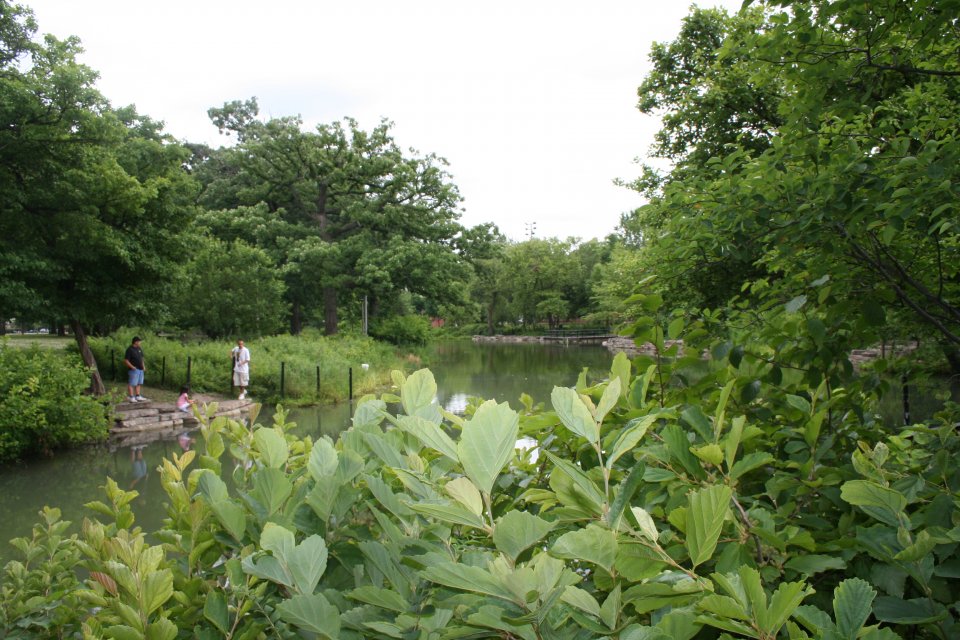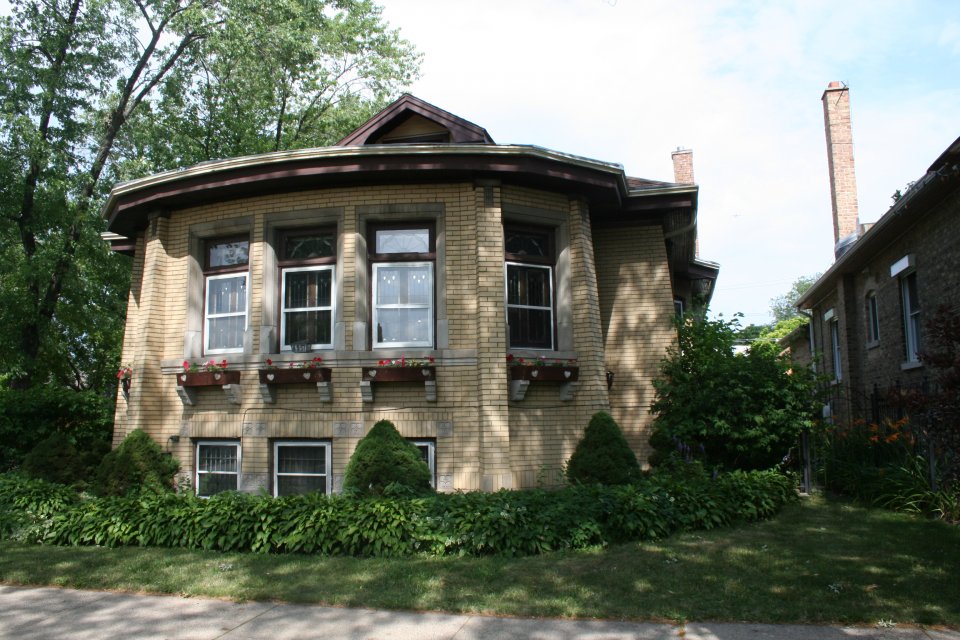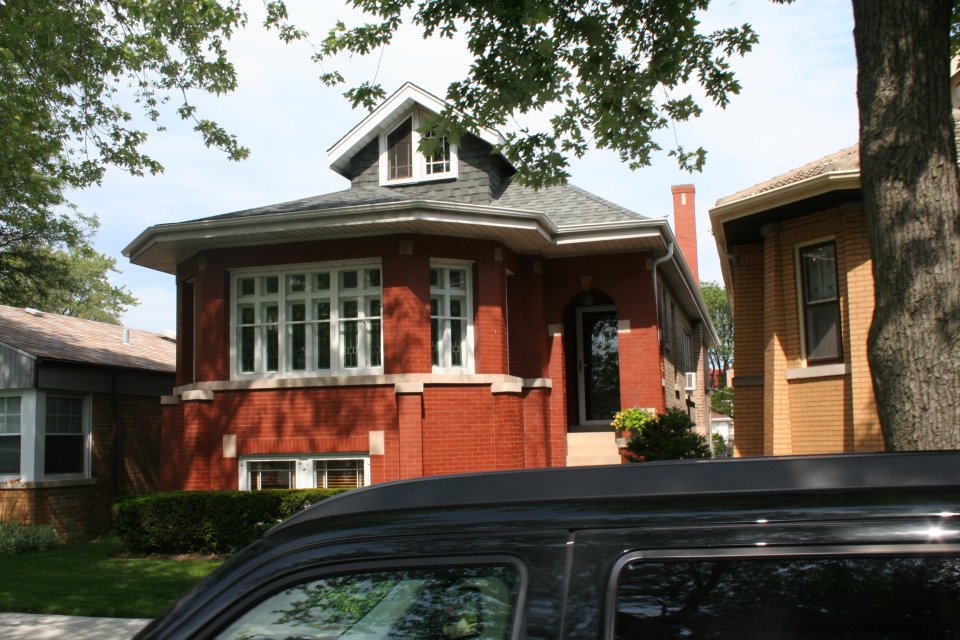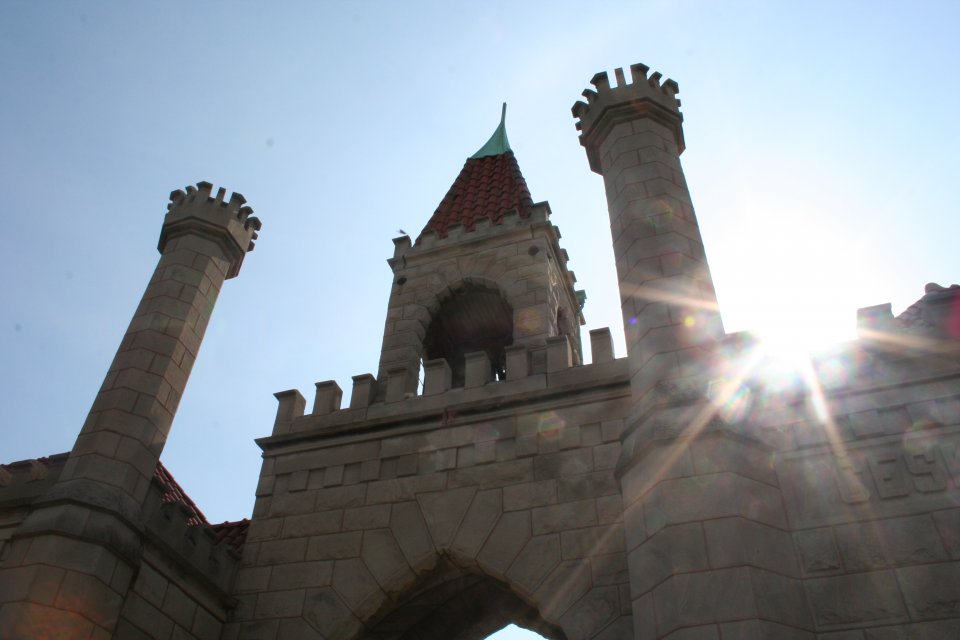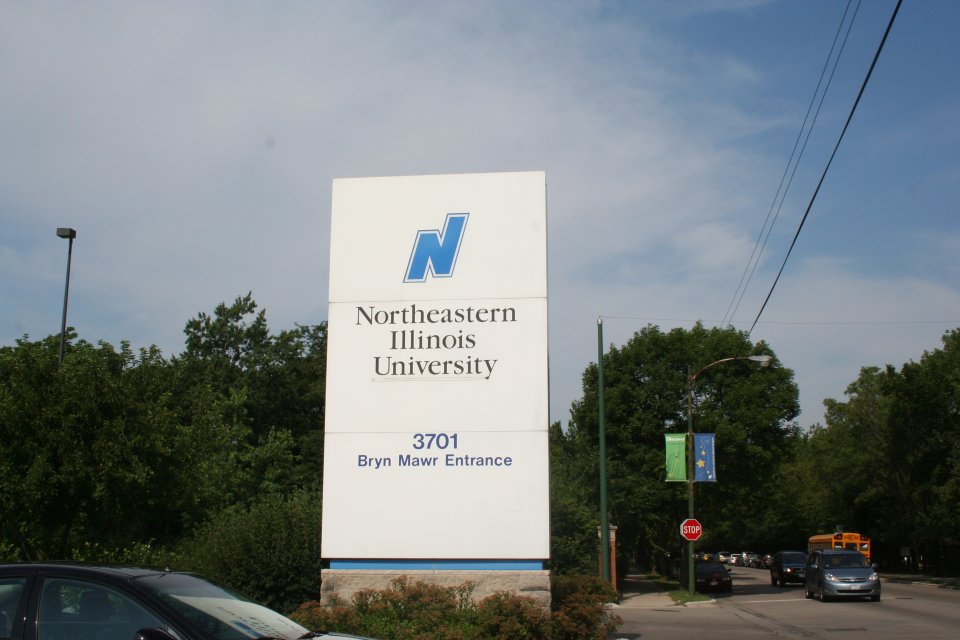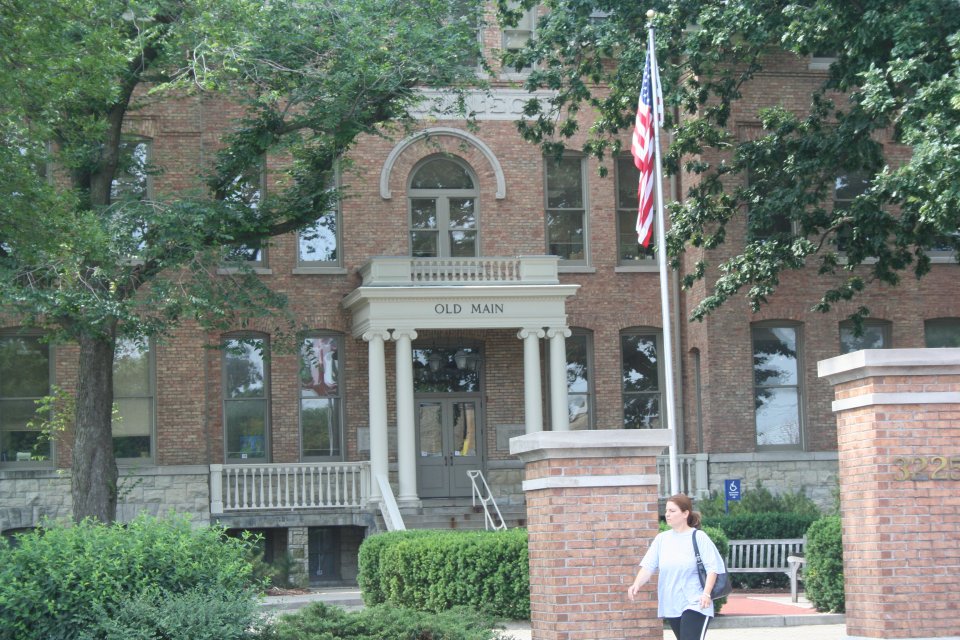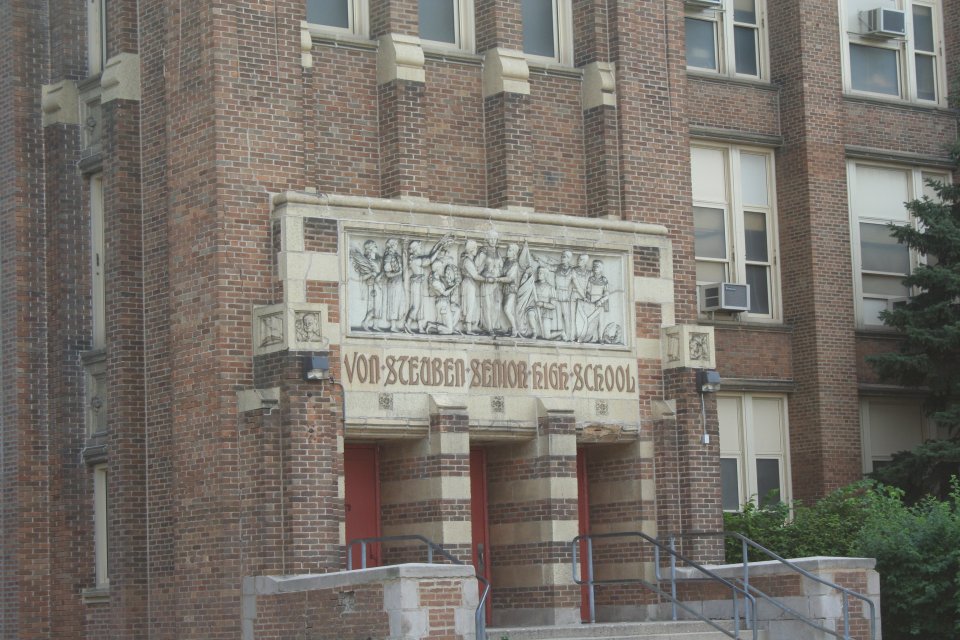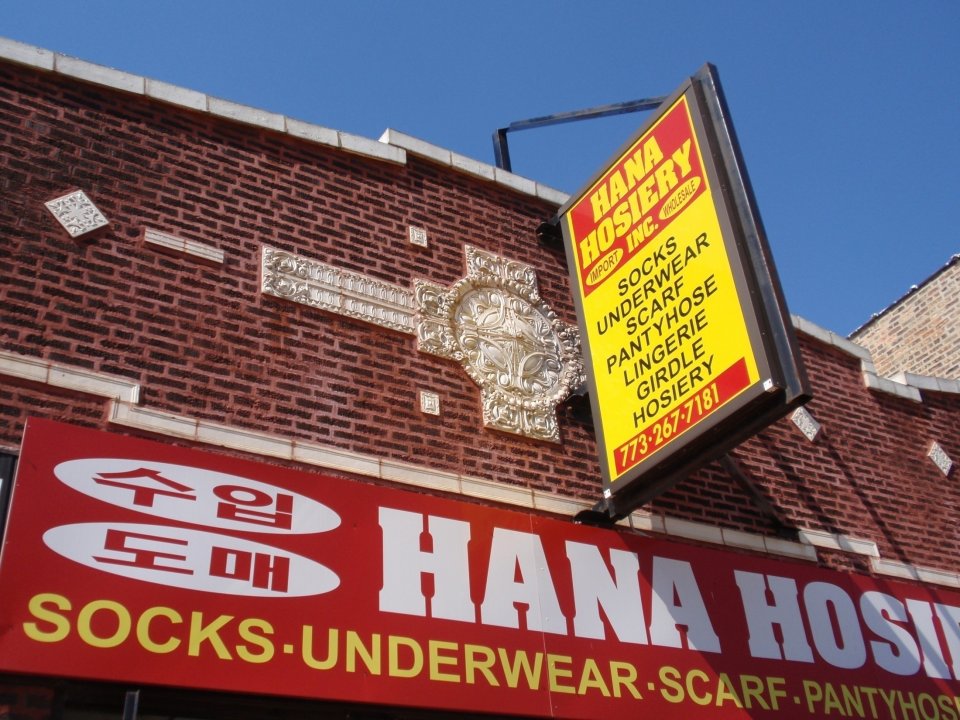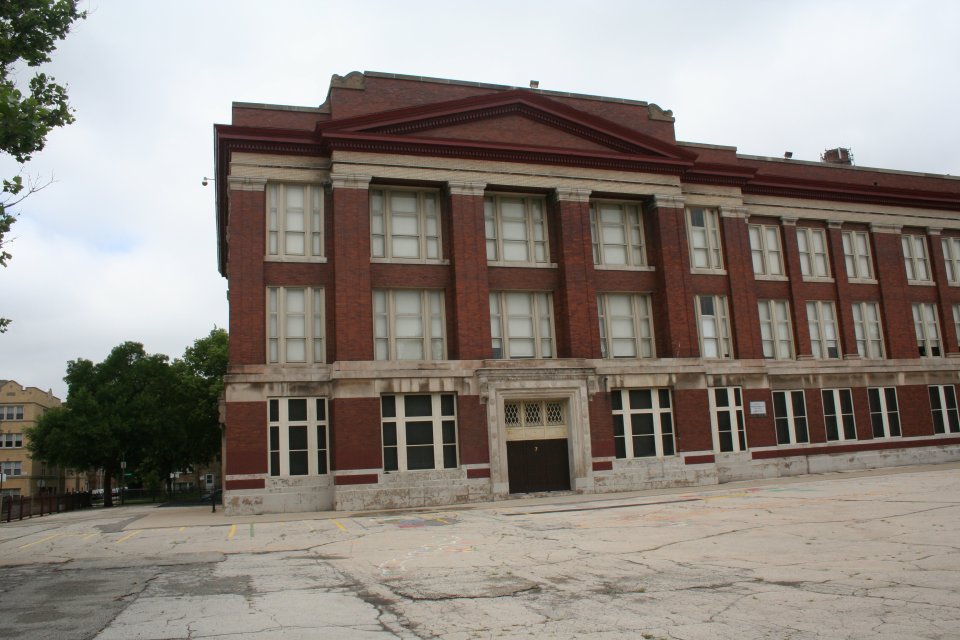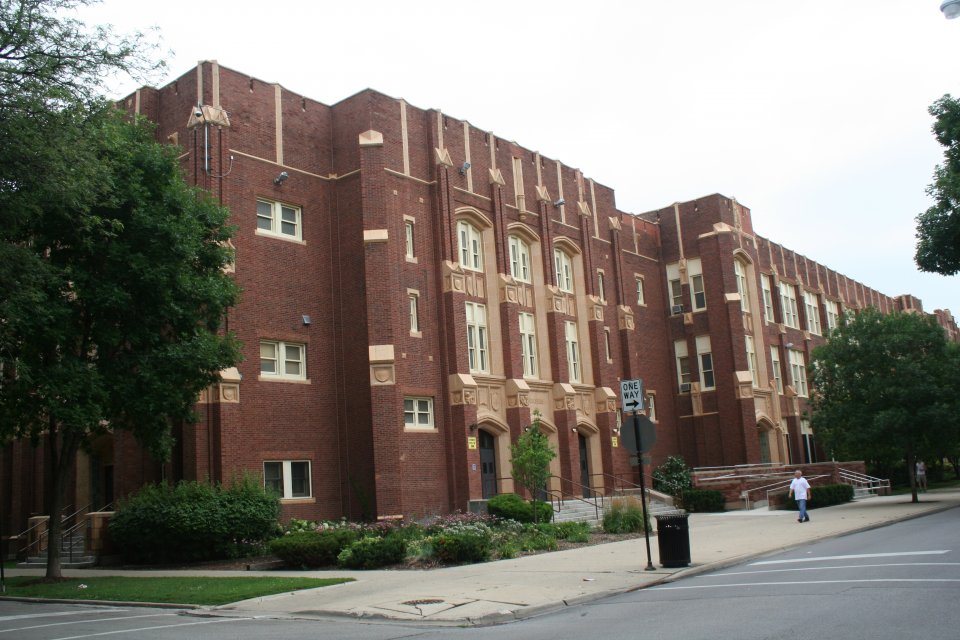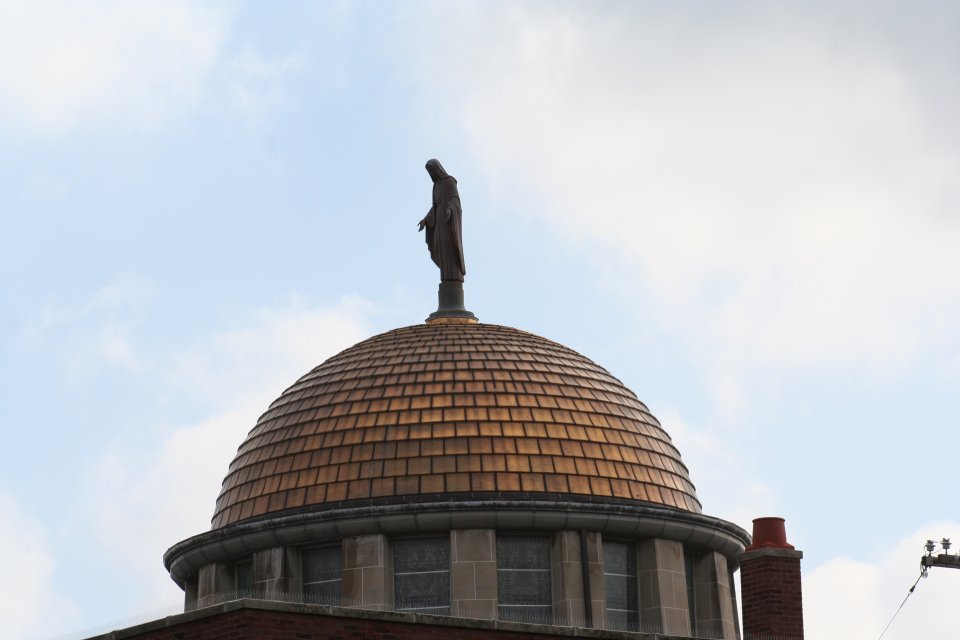Albany Park is Chicago Community Area #14. We are located 8 miles northwest of the loop and we are surrounded by North Park to our north, Forest Glen to the northwest, Jefferson Park to the West, Portage Park southwest, Irving Park to the South, North Center to the southeast and Lincoln Square to the East. We are currently also standing in the Albany Park neighborhood. The community area’s borders are roughly Montrose on the south, the North Branch of the Chicago river to the east and north, and on the West, part of the border is at Pulaski and part is at the original plank road, Elston on the West, and then jogs over on Lawrence to Cicero. The neighborhood of Albany Park extends its northern border to Bryn Mawr, well into the geography of the North Park community area, and only extends as far west from the river as Pulaski.Albany Park’s beginnings go back to 1868 when Richard Rusk built a large farm and a brickyard along the North Branch of the Chicago river. Soon citizens of Chicago and the surrounding suburbs were coming to Rusk Race Track to watch the horse races, and a few enjoyed the slower pace of country life and moved out to the Northwest Suburbs to escape the city. By 1889, Albany Park was annexed to Chicago with the rest of the Jefferson Township. At this time, the area was hardly developed at all. A group of four Chicago investors bought 640 acres of the land in the area that is now Albany Park and developed it. Amongst them were three moguls in streetcars, transportation and Railroads, so they brought rail lines and street cars to the area, a move that proved to be a critical factor in the success of the neighborhood. One of the men in the group, DeLancy Louderback was originally from Albany, New York, for whom they named the development.Today, it is a beautiful built environment with several great historic districts and homes as well as impressive commercial and civil spaces. The area is also lush with plenty of open and green space. It is one of the most ethnically diverse communities and one of the most fiercely Democratic regions in the entire United States.
We are also in the neighborhood, Albany Park as well as the Community Area. The Community Area stretches from Montrose to the North Branch of the Chicago River, which serves as its Eastern and Northern border, and it ends at Elston on the West, and then jogs over on Lawrence to Cicero. Meanwhile, the neighborhood of Albany Park is located in both the Albany Park and North Park community areas.
Gompers Park – 4220 W. Foster Ave
This is really two parks, or a park in two parts. We will be exploring them in two stages. The first part of the park is the area we will begin at, which is North Gompers Park, planned and built in the 1920s, and South Gompers Park added in 1938 as a WPA Project.
Originally created by the Albany Park District, before it was merged into the Chicago Park District, land acquisition for this park began in 1923, and lasted nearly a decade. During the intervening years, landscape architect Henry J. Stockman made plans for this park as a series of parks along the river. The Field House was another in a series of Tudor styled field houses of Clarence Hatzfield. He is actually a prairie architect, but in the parks of the North Park and Albany Park area, most of his work was Tudor Revival. Gompers Park is named for Samuel Gompers, the longest serving president of the American Federation of Labor.
North Mayfair Neighborhood
We are now in the North Mayfair neighborhood which extends from Pulaski to Cicero and Bryn Mawr to Lawrence. Most of this neighborhood has been designated a National Historic Landmark as the North Mayfair Bungalow Historic District, whose boundaries are Kostner on the North, North Pulaski and Keller on the East, Ainslie on the South and North Kilbourn on the West. Most of these homes were built between 1913 and 1930.
LaBagh Woods
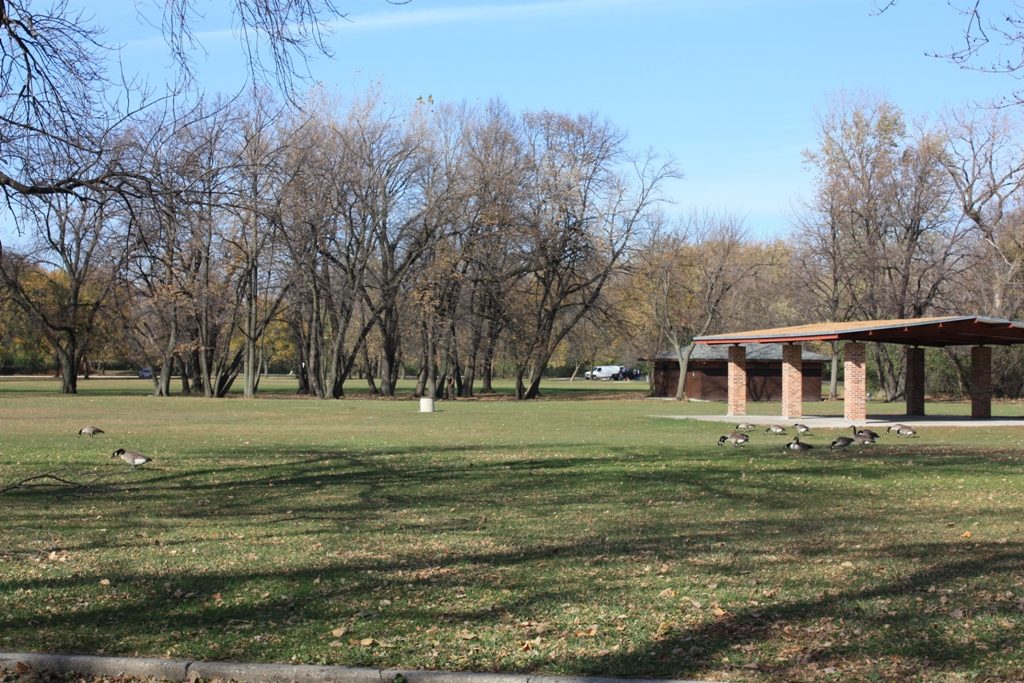
LaBagh Woods
Somehow, this reserve contains 600 acres of woods and green space. It is immediately adjacent to the Chicago river on one side, and Cicero on the other. A totally well planed green space amidst all of the hustle and bustle of the city. It is also next door to the Irene Hernandez Family Picnic Area and there is a neat overpass of the highway that we will use to exit back onto our path.
John M. Palmer Elementary School – 5051 N. Kenneth Ave.
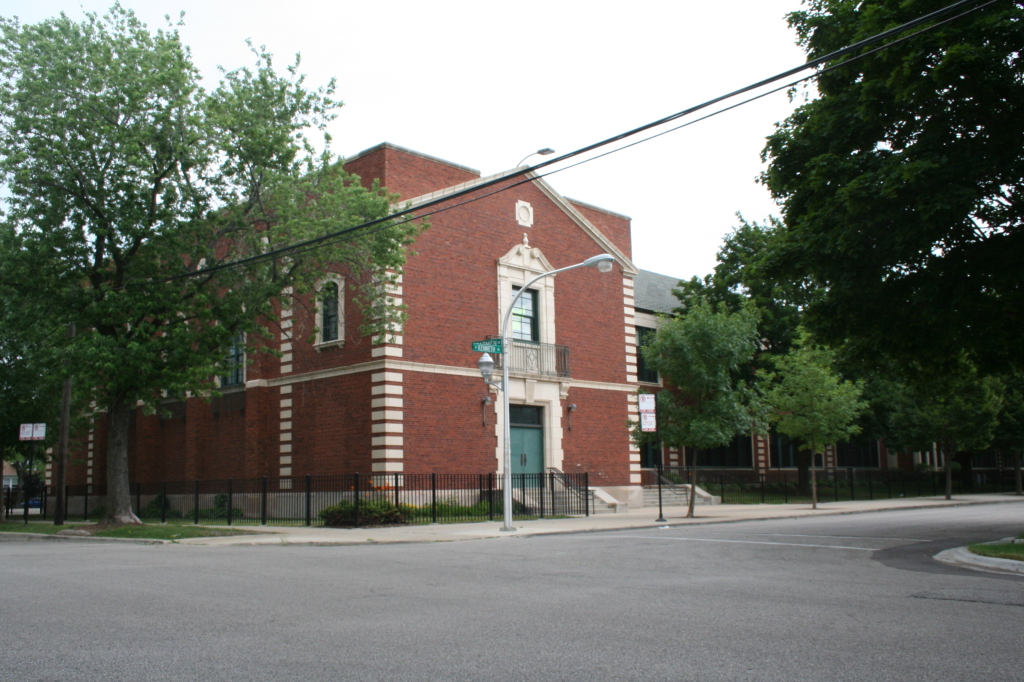
John Palmer Elementary
Built in 1925 and named for John McAuley Palmer. Palmer was an amazing individual. He was born in Kentucky, a slave state, but became a vigorous abolitionist and fought in the Civil War as a general for the Union army. He was a champion of the downtrodden and was long a Democrat. When he felt the party was abandoning core values he felt true to, he helped form the Republican party and became our state’s 13th governor as a Republican, before he switched back to the Democratic party and eventually ran unsuccessfully for President.
Mayfair
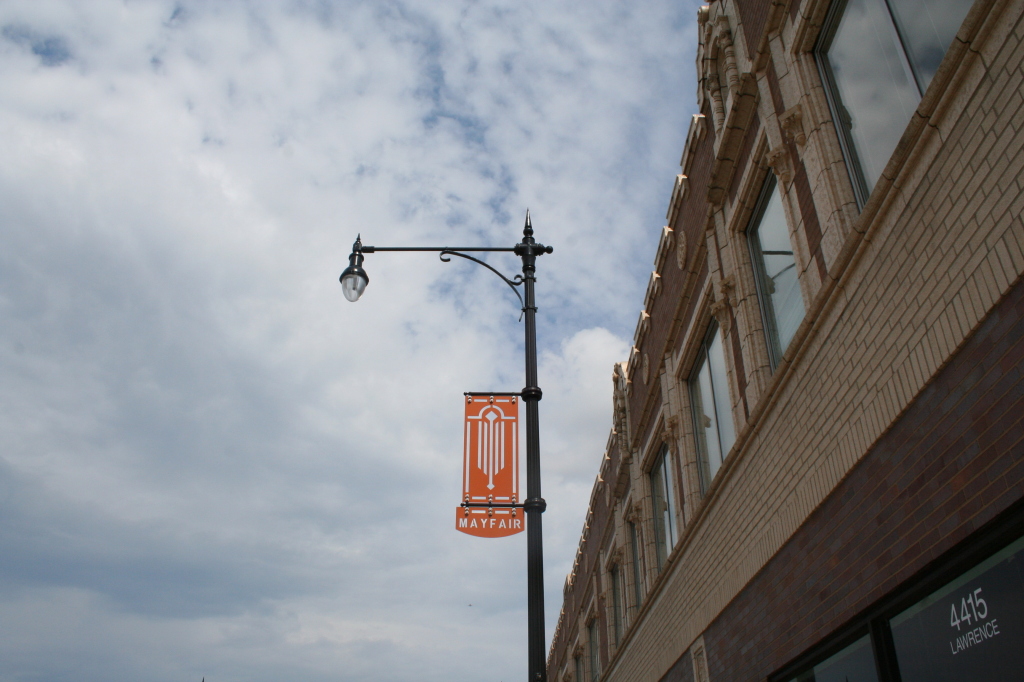
Mayfair sign
The neighborhood Mayfair was originally the village of Montrose before it was annexed by Chicago in 1889. It extends from Pulaski to Cicero and from Lawrence to Montrose.
Mayfair Park – 4550 W. Sunnyside Ave.
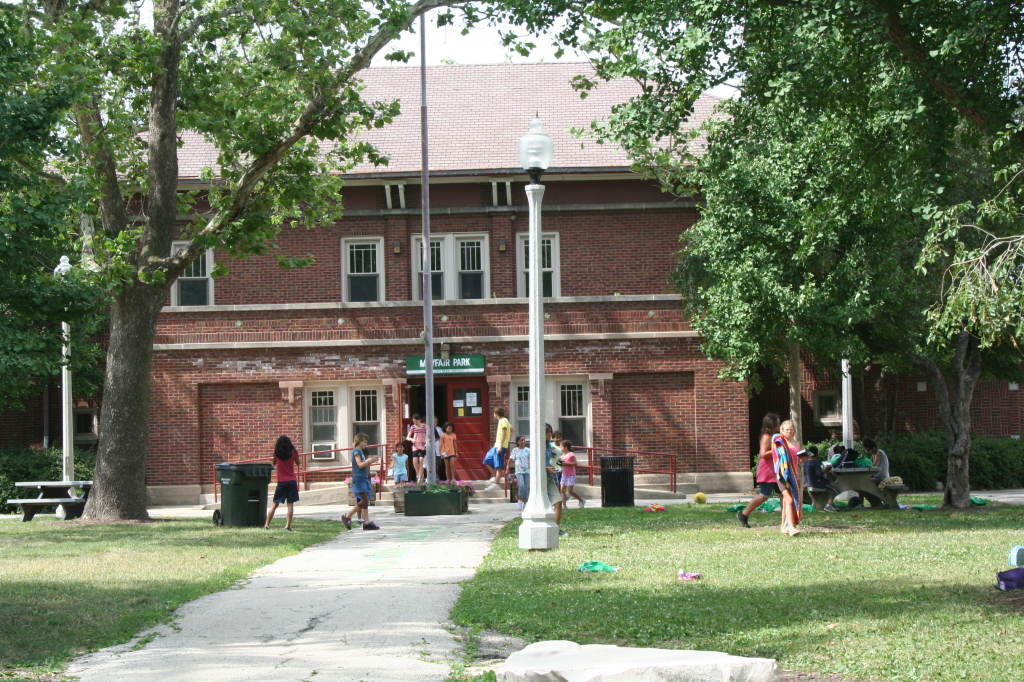
Mayfair Park
Named for the neighborhood it is in, Mayfair Park was planned in 1913, land was purchased in 1916, and it features a field house that was once again, designed by Clarence Hatzfeld, but also renovated by him a number of years later in 1936.
Irish American Heritage Center – 4626 N Knox Ave
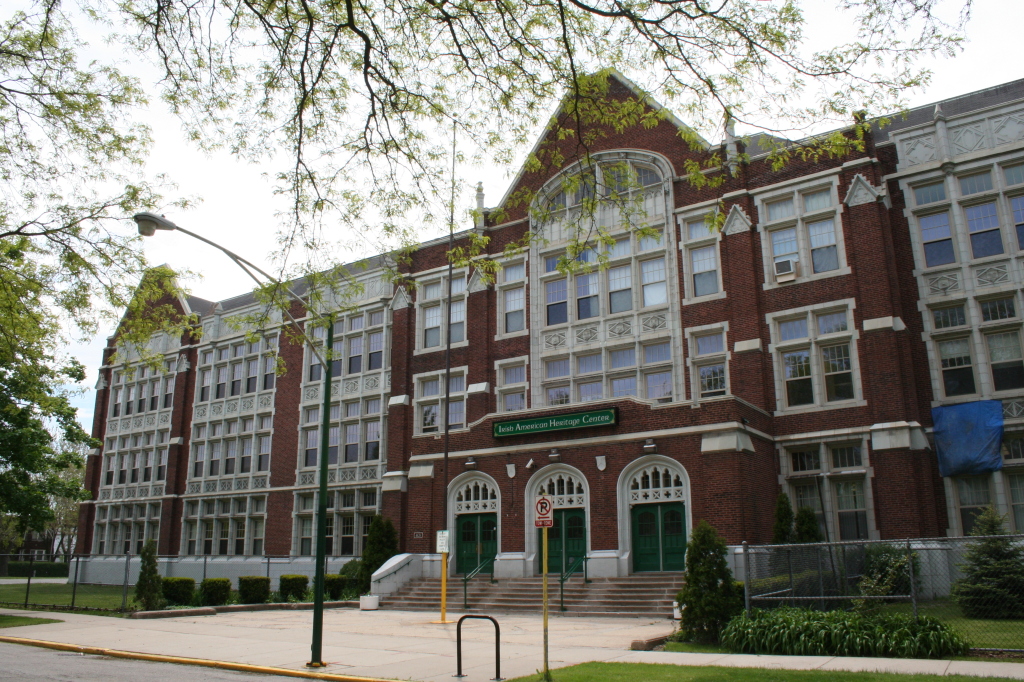
Irish American Heritage Center
This building is a world-renowned, full-service, everything-under-one-roof Irish cultural center. That includes a library, dancing and music performance and instruction, ballrooms, even an Irish pub. It can be rented, and it is also plays host to the annual Irish Fest. This building was bought and continues to function with the support of hundreds of volunteers. They also raised money to renovate this turn-of-the-century building which with its land, spans the entire city block.
Henry V. Peters House – 4731 N Knox Avenue
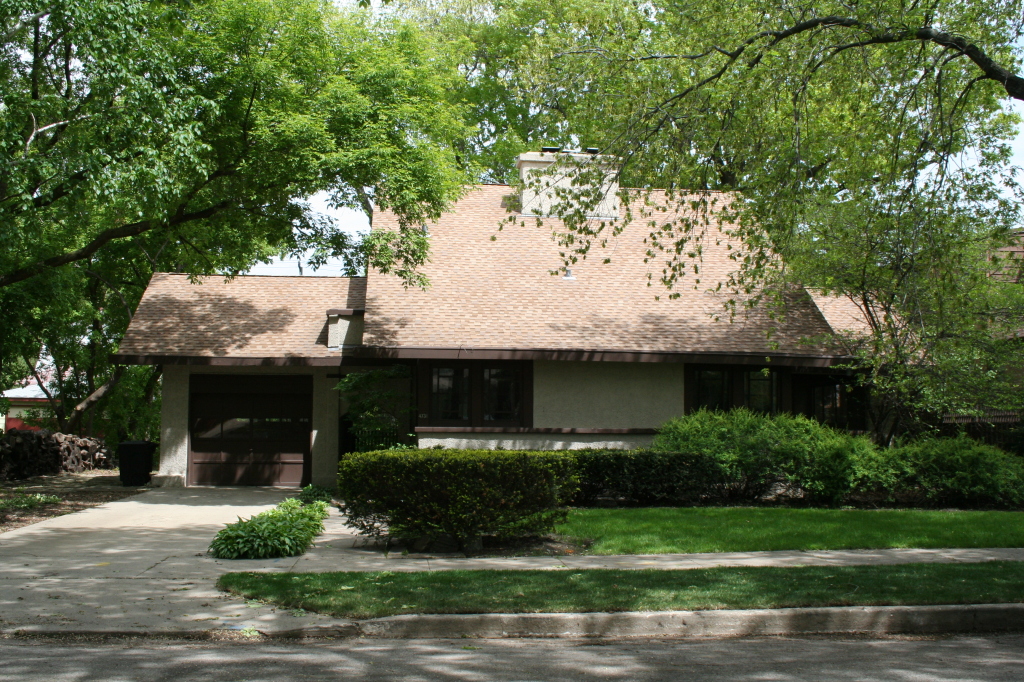
Henry V Peters House 1
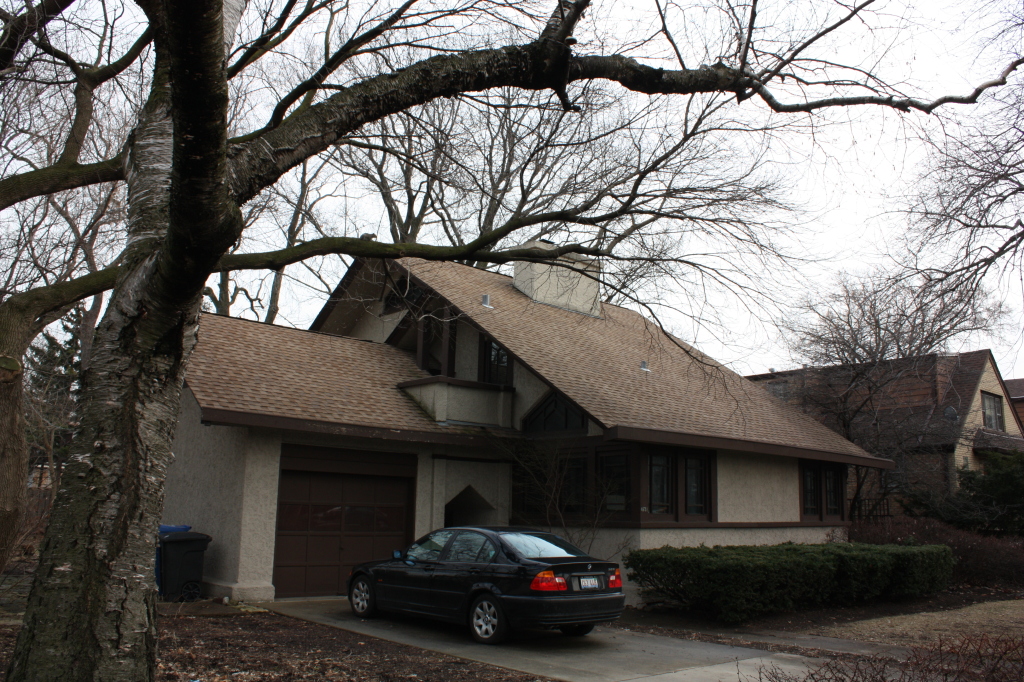
Henry V Peters House 2
This house was commissioned a city landmark on May 4, 2004 at a ceremony presided by Mayor Dailey where he hailed this house as “a classic in early Prairie design”. The home was built for Henry V. Peters, one of the original developers of the Mayfair subdivision. It was designed by Walter Burley Griffin , a significant member of the Prairie School and early in his career, an employee and protégé of Frank Lloyd Wright. He also married Wright’s most noted illustrator, Marion Lucy Mahony. Griffin was a great admirer of Louis Sullivan, in particular, his philosophy that buildings should be fully original and without precedence. This building was built in 1906 by contractor and builder Charles Siebold for a total cost of $3,000. This was the year Griffin started his own practice and is his first solo work in Chicago. The broad side gabled house accentuates the horizontal nature of the prairie design. It has roof eaves that extend far beyond the edge of the structure and features intricate and fine craftsmanship. It is also one of the first known examples of a residence with an attached garage.
“The Little Red School House” – corner of Kostner and Lawrence
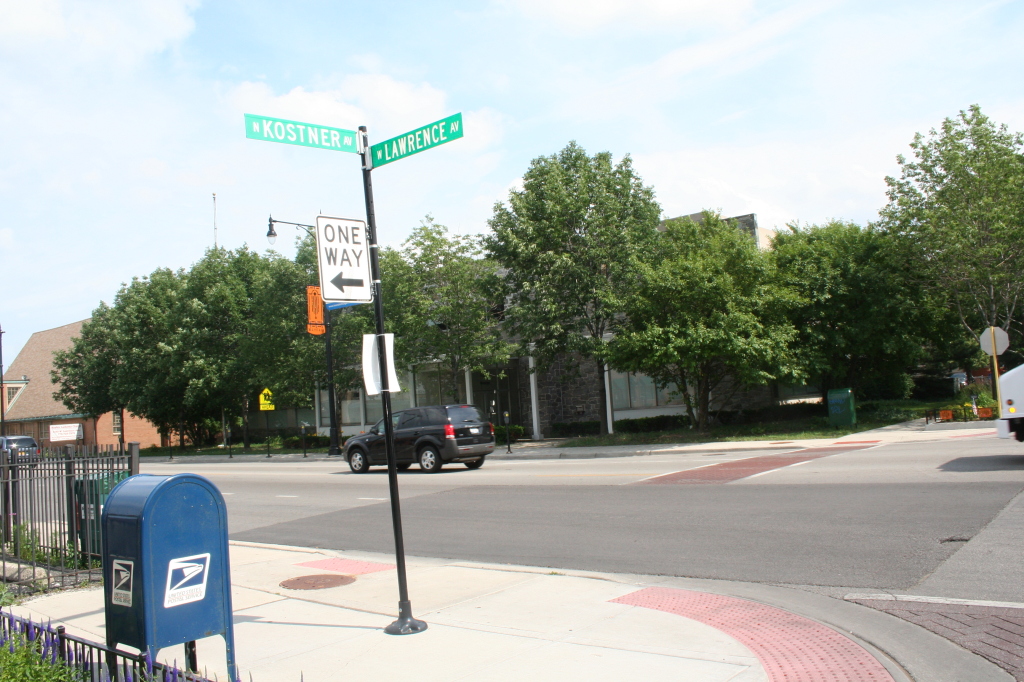
Site of Little Red School House where MASOM now sits
Where MASOM (Midwest Association of Shia Organized Muslims) is now – one of the first schools in the area. Jennie Erickson taught there for 30 years. She was a member of the Erickson’s family, one of the most influential families in Albany Park history. We’ll talk more about them jus in just a bit.
Mayfair Presbyterian Church – 4358 W Ainslie
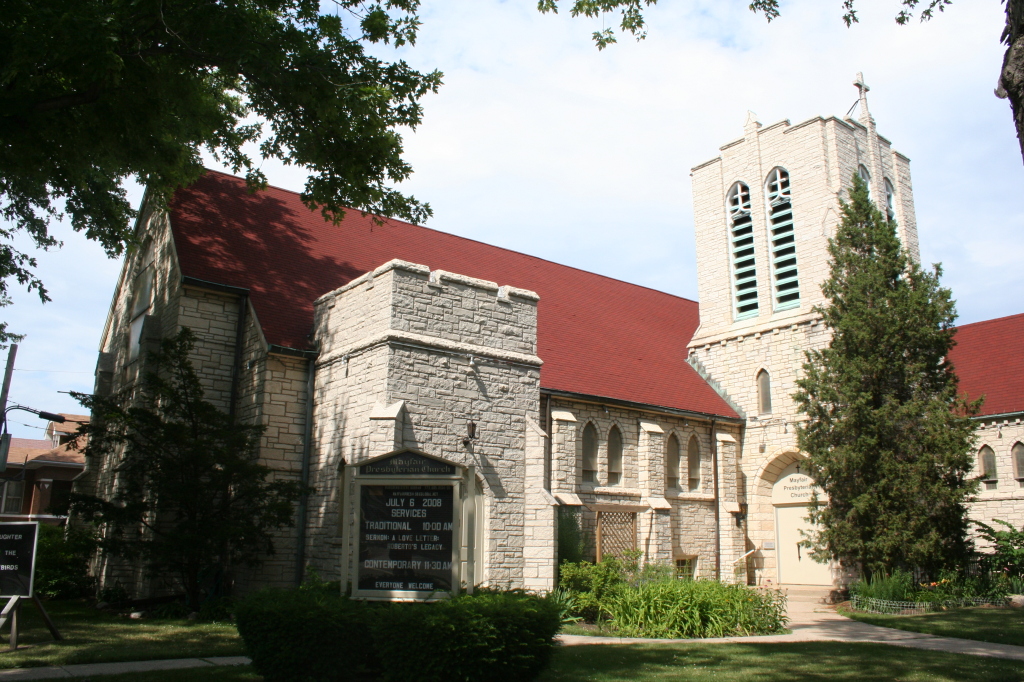
Mayfair Presbyterian Church
One of the influential families and builders in the Albany Park area was the Spikings who built much of North Mayfair and Albany Park. They started a school for the children of Bohemian Cemetery workers and that became Mayfair Presbyterian Church right here.
5100 N Kostner block
Much of this block was built by an early settling family to the area, the Ericksons, who also built much of North Mayfair . Peter Erickson and his family immigrated from Sweden in 1846 and in 1850 bought ten acres of land in what is now North Mayfair.
Mayfair Salvation Army – 5040 N. Pulaski Rd
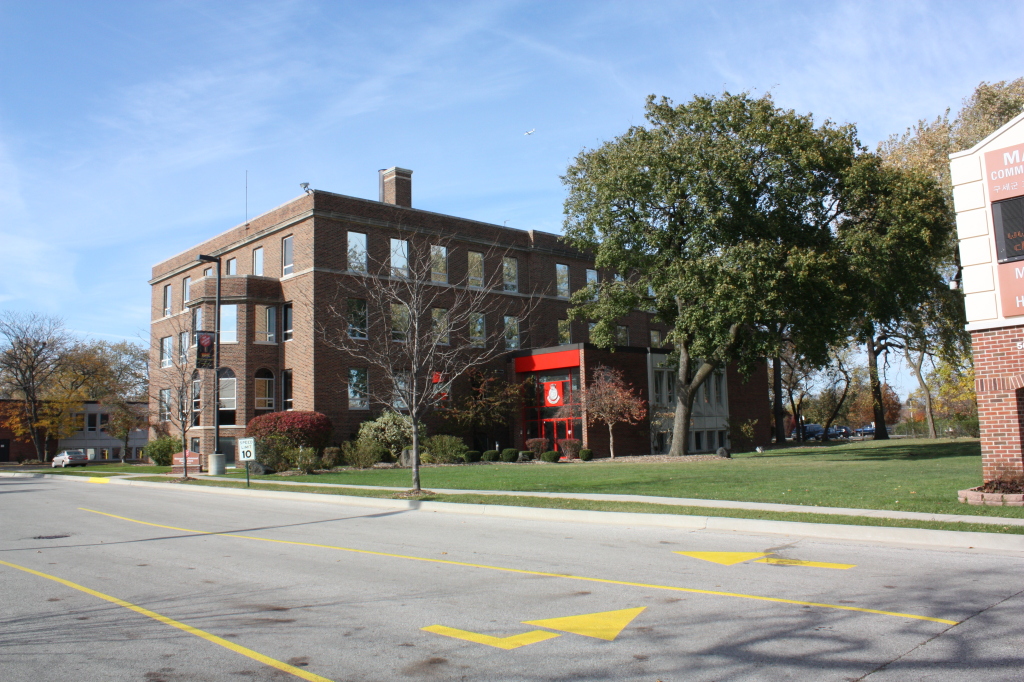
Mayfair Salvation Army
The Bohemian Home for the Aged – 5061 -5115 N Pulaski and 5101 – 5101 N Pulaski
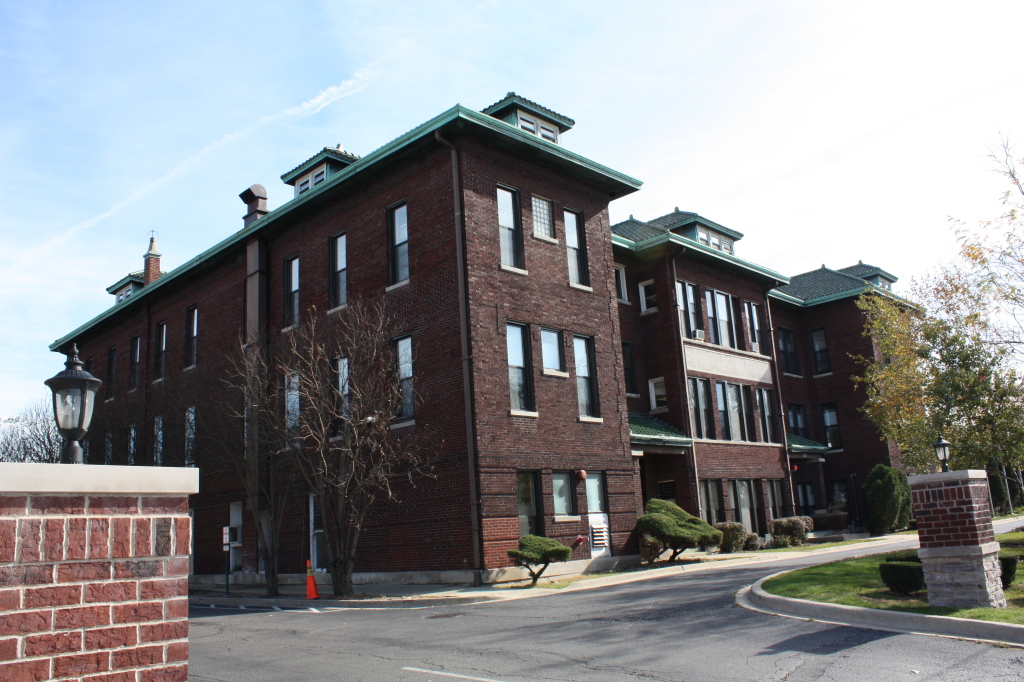
Bohemian Home for the Aged
These very different in style buildings across the street are all now home to the Bohemian Home for the Aged. The Prairie style buildings at 5061 The other buildings between 5101 to 5105 N Pulaski are Romanesque/Classical in form and I am unable to tell you anything about their build history or architect.
Three Cemeteries
- Bohemian National Cemetery – 5255 N Pulaski
- St. Lucas Cemetery – 5300 N Pulaski Rd
- Montrose Cemetery – 5400 N Pulaski Rd
Of these three adjoining cemeteries, the most impressive in form and story is the Bohemian National Cemetery. It’s massive gothic front gates were added to the National Registry of Historic Places in 1977. It is a massive. The cemetery was founded in 1877 when other Catholic facilities were refusing burial of Bohemian immigrants. Originally started with 50 acres, over time the cemetery has stretched its grounds to over 120 acres. Some of the most famous Czechs and Czech Americans are buried here, including Anton Cermak the mayor of Chicago that died protecting the life of President Franklin D. Roosevelt in an assaniation attempt and T.G. Masaryk, the founder and first president of the Czechoslavak Republic. His mausoleum is the enormous building at the corner of Pulaski and Bryn Mawr that you will see on our right as we pass.
Montrose Cemetery is so named because Mayfair used to be called the town of Montrose before it was annexed to Chicago.
Northeastern Illinois University – 5500 North St. Louis Avenue
This state university on the north side of the city sits in the Albany Park neighborhood, in the portion that is part of the North Park community area. It originally began as a Teacher’s college in 1867 and after the facility was relocated, it underwent several identity and name changes before becoming Northeastern Illinois University in 1971. The neatest thing about biking through the campus is how easy they make it to forget you are in the city. The grounds contain a number of interesting sculptures and are laced with paths of Prairie Reclamation
5523 N Bernard
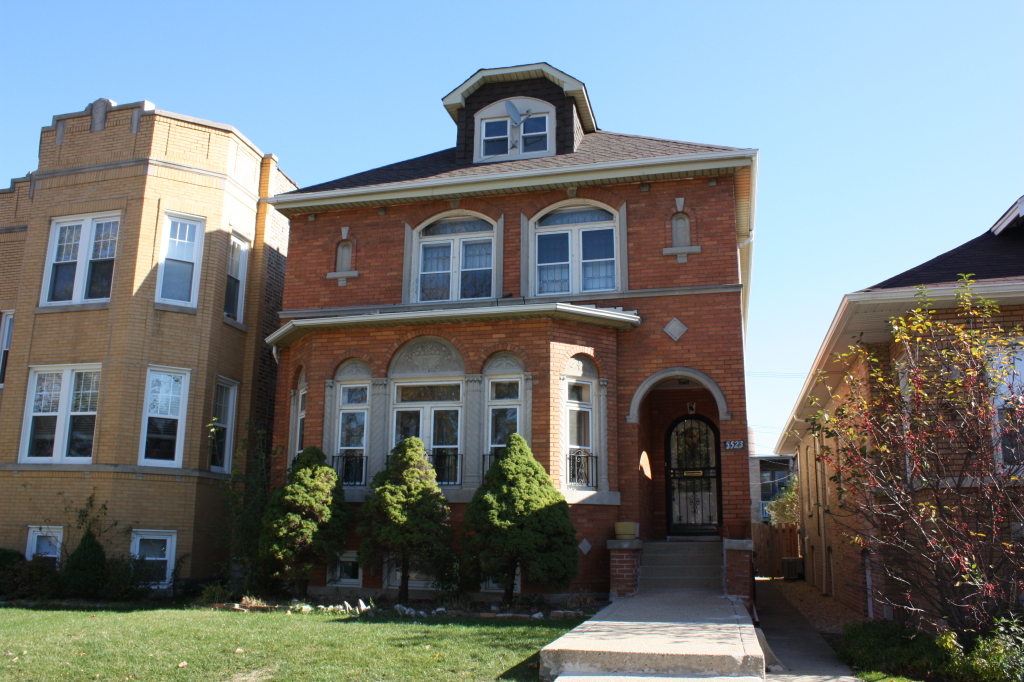
5523 N Bernard
This Classical Renaissance Revival home was designed in 1930 by architect R. Cummings.
Peterson Elementary – 5510 N Christiana Ave
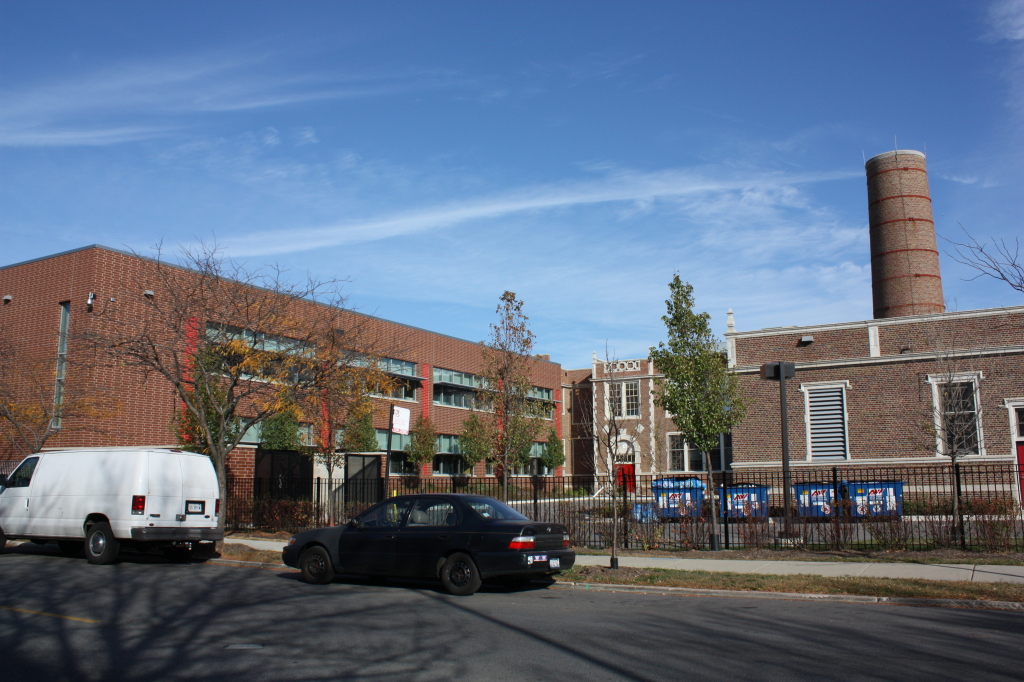
Peterson Elementary
Established in 1926, and named in honor of Mary G. Peterson, whose family owned a great deal of land in North Park. She also was noted conservationist and the author of “Nature Lover’s Creed”.
3244 -3254 W Bryn Mawr
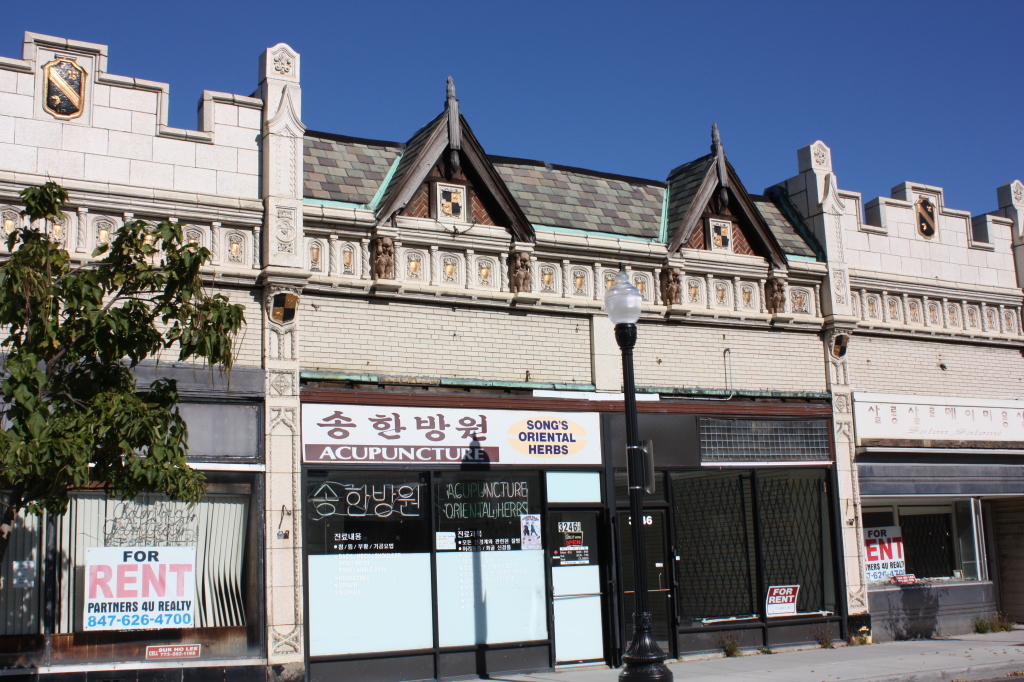
3244 -3254 W Bryn Mawr
Despite a dinged up appearance today, this Gothic Revival commercial strip building is an impressive structure, even with less than impressive appearances today. It was designed by Edward P. Steinberg, and construction began in 1930.
5300-5302 N Sawyer
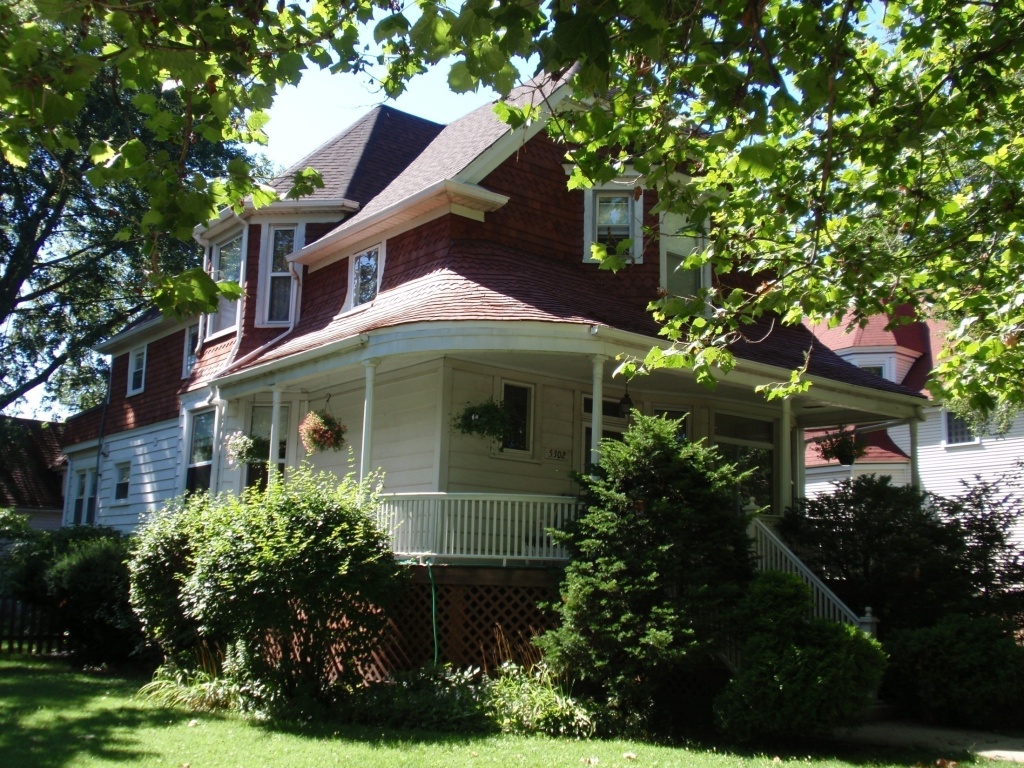
5300-5302 N Sawyer
1903 Shingle style Queen Anne Victorian
North Park College – 3225 W. Foster Avenue
Yet another north side college in the city, North Park College was founded in 1891 by the Evangelical Covenant Church. It’s first building, the Georgian Revival styled Old Main was built in 1893 and was listed on the National Historic Register in February of 2002.
Amongst the other significant surviving structures, mostly Colonial Revival and Georgian on campus are Wilson Hall and Caroline Hall. Again, as with Northeastern, the grounds are exceptionally pretty and are part of a prairie lands reclamation project.
Von Steuben High – 5039 N Kimball
Opened in 1930 as a junior high before becoming a senior high school 3 years later, VonSteuben High School was named for Friedrich Wihelm von Steuben, a Prussian military officer who became a hero of the Revolutionary War and the right-hand man to George Washington, he is credited with establishing the basics of military training and drills that helped the Americans win the war. His techniques became the drill manual for the US military until the War of 1812.
Eugene Field Park – 5100 N. Ridgeway
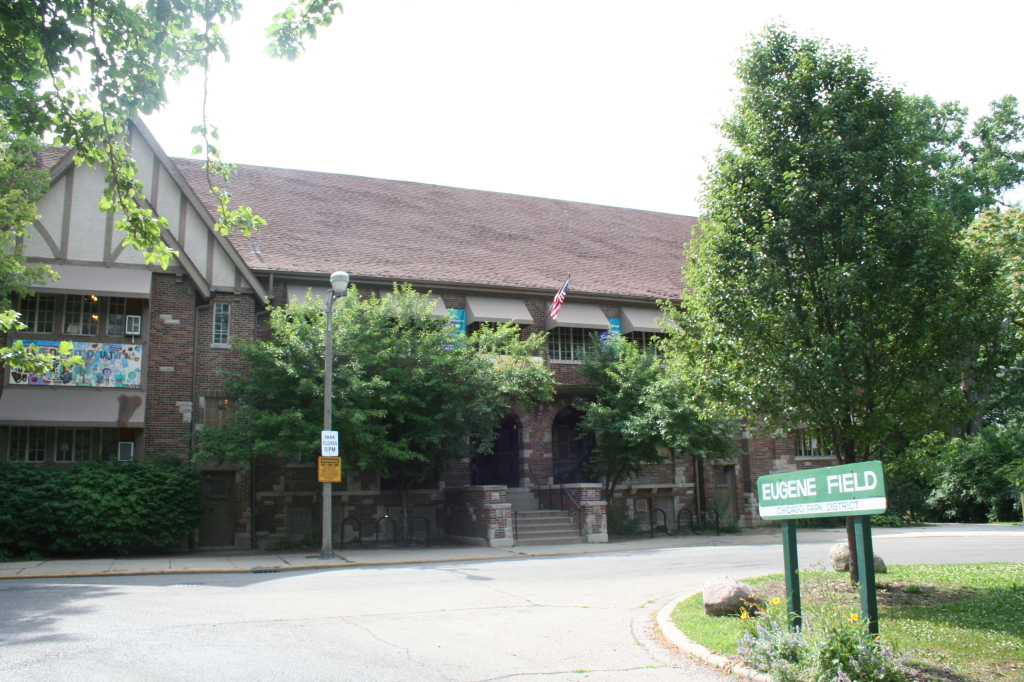
Eugene Field
In 2001, Eugene Field Park was officially designated a Chicago Park District Cultural Center. In 2006, it was listed on the national register. It plays host to the Albany Park Theater Project, a teen theater ensemble that does two full scale productions a year that depict life amidst the present day working-class Albany park community.
Henry J. Stockman made plans for this river side park as part of his chain of parks along the river in Albany Park and North Park, including the trails we just rode through. The Tudor Revival Field house built in 1928 is another brilliant public building by Clarence Hatzfeld, one of the most under-rated Prairie architects. On the interior walls is one of many field house Works Progress Administration murals, this one entitled, “The Participation of Youth in the Realm of the Arts.”
Eugene Field is best known for writing “Wynken, Blynken, and Nod,” and was a nationally recognized children’s author that lived in Chicago. The tile mosaic in the front is designed to honor him and his stories.
Volta Elementary – 4950 N Avers Ave
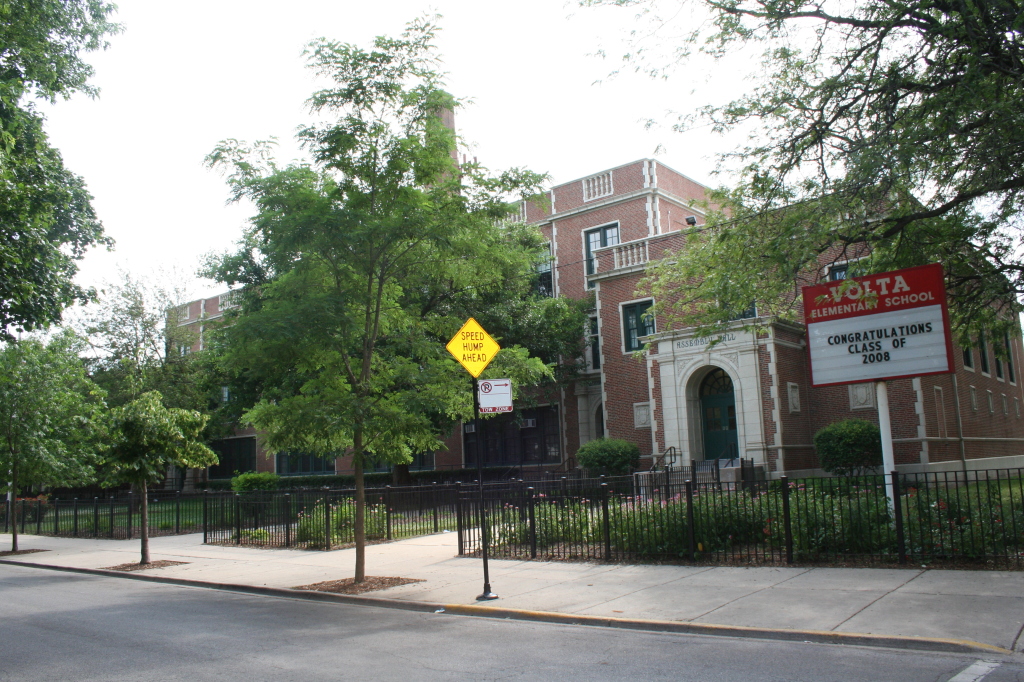
Volta Elementary
Named for Alesandro Volta who invented the first electric cell back in 1800, Volta Elementary serves nearly 1,000 students.
4921 N Hamlin
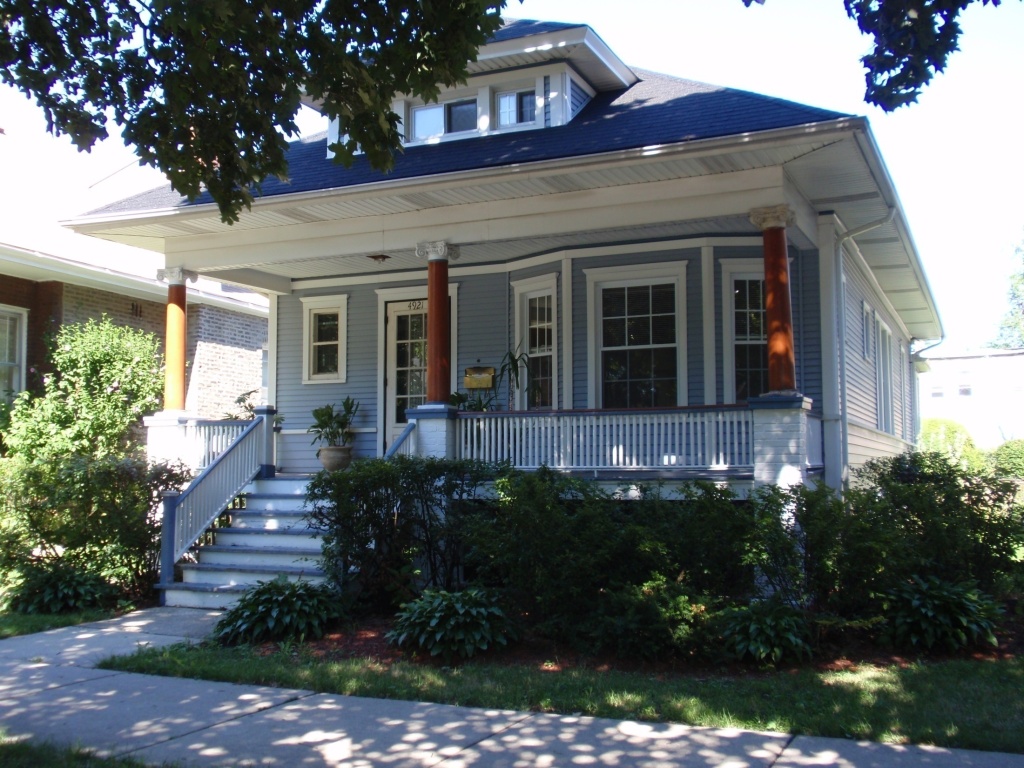
4921 N Hamlin
Construction began in 1914 on this Bungalow designed by Harry E. Stevens,
Elim Romanian Pentecostal Church – 4850 N Bernard
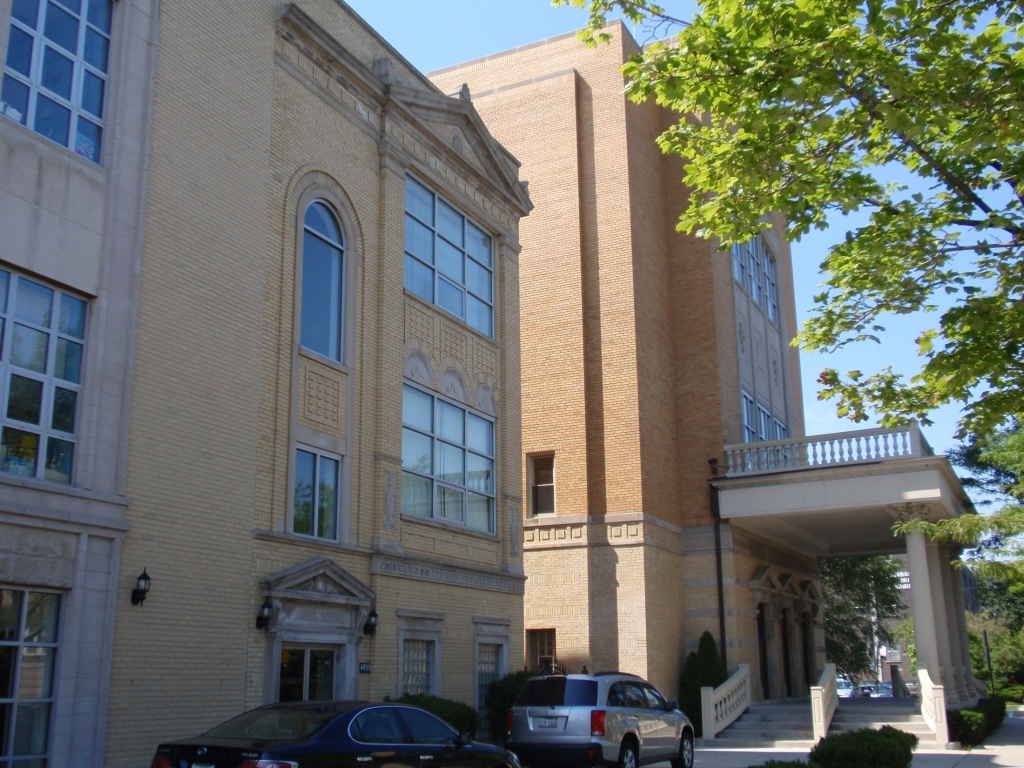
Elim Romanian Pentecostal Church
Formerly the Albany Park Presbyterian Church, this building was designed in 1919 by brother architects Irving Kane Pond and Allen B. Pond, who were masters of Arts and Crafts styled architecture. They are the designed of Jane Adams’ Hull House amongst other works and their institutional and religious works are very influential buildings of the early 20th century.
4845 N Bernard
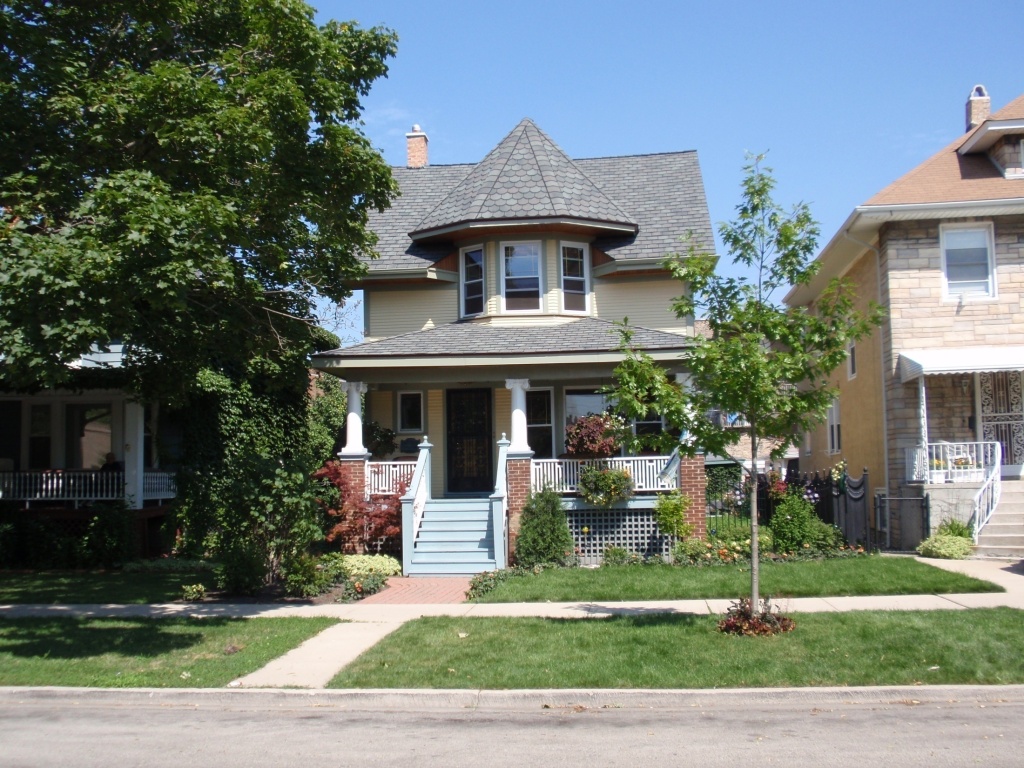
4845 N Bernard
An unusually center-oriented Queen Anne circa1908.
4930 N Bernard
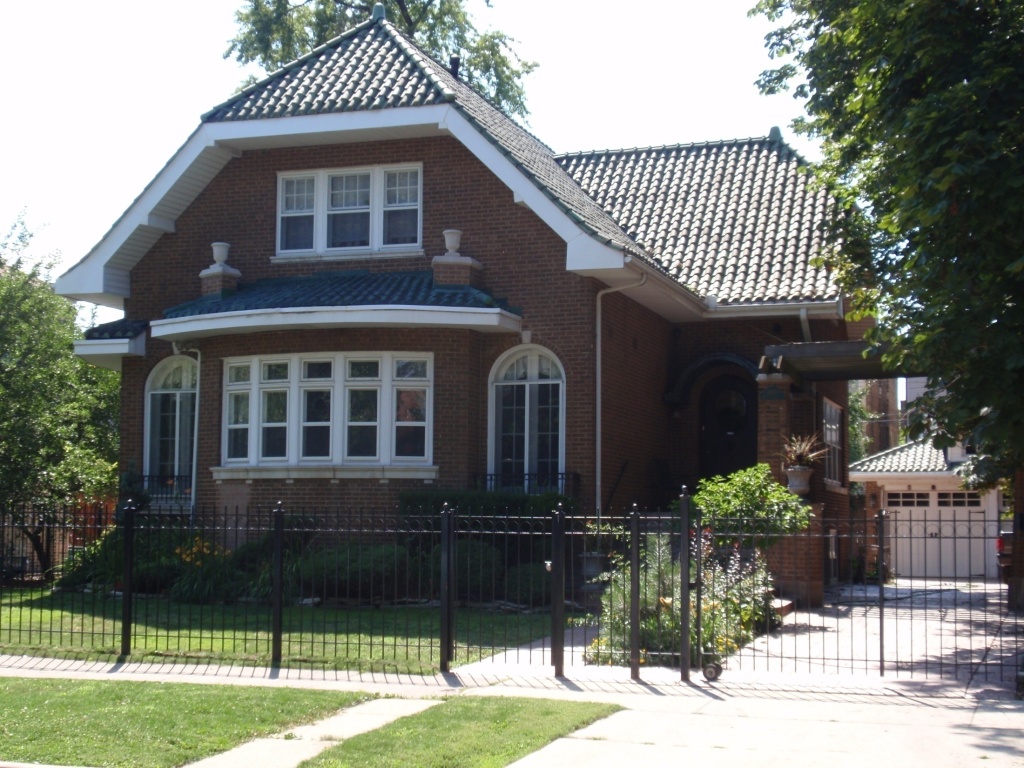
4930 N Bernard
Build in 1922 and designed by Axel V. Teisen, designed this Craftsman style residence in 1922. Teisen was a major figure in the realm of bungalow design, having designed many residences and whole communities in Chicago, including a large number of the bungalows in Schorsch Village, a major community in the bungalow belt.
William G Hibbard Elementary – 3244 W Ainslie St.
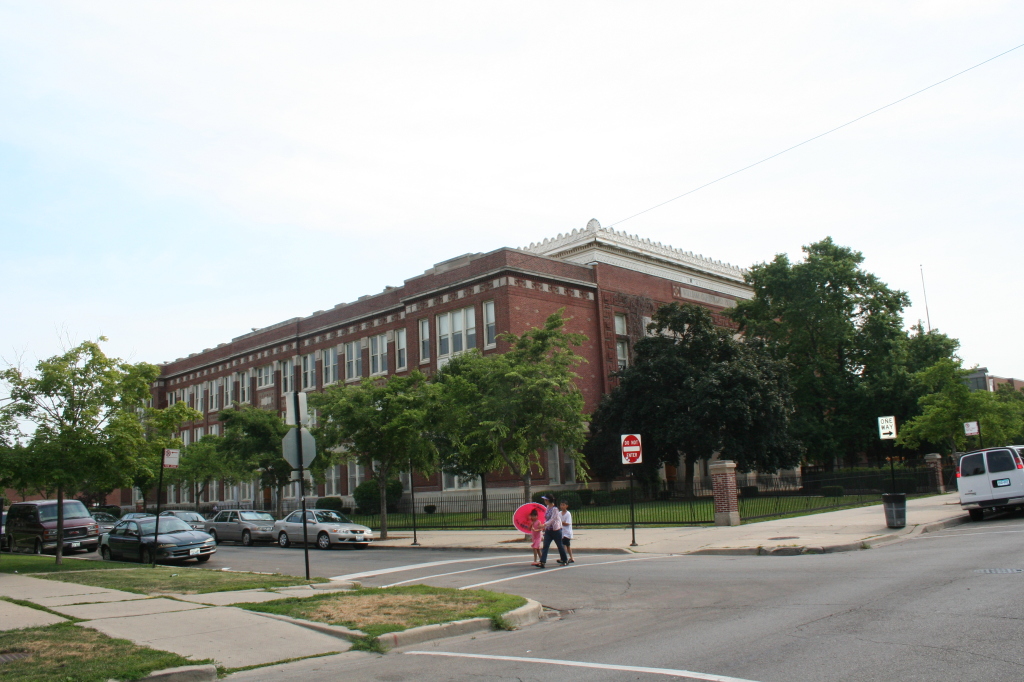
William Hibbard School
Built in 1917 from a design by architect Arthur F. Hussander, who built several Chicago public schools, this Classical Revival styled school features numerous Greek and Roman influences.
5035 N Sawyer
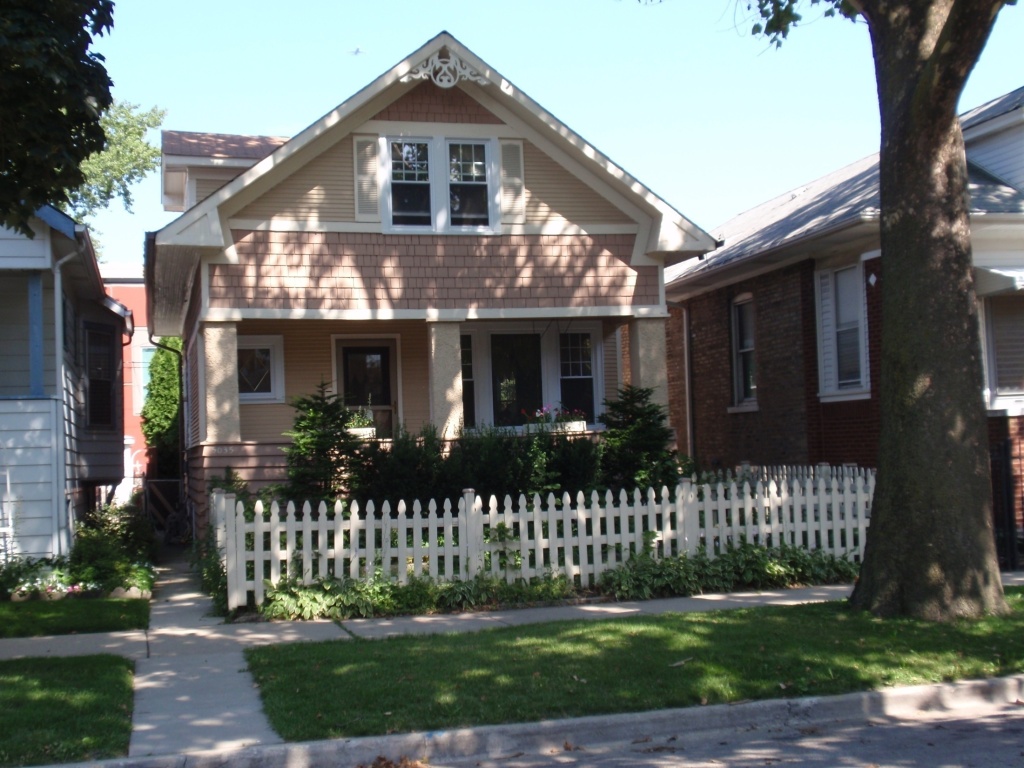
5035 N Sawyer
This William Schilling designed Craftsman residence was constructed in 1914.
River Park
5100 N Francisco Ave
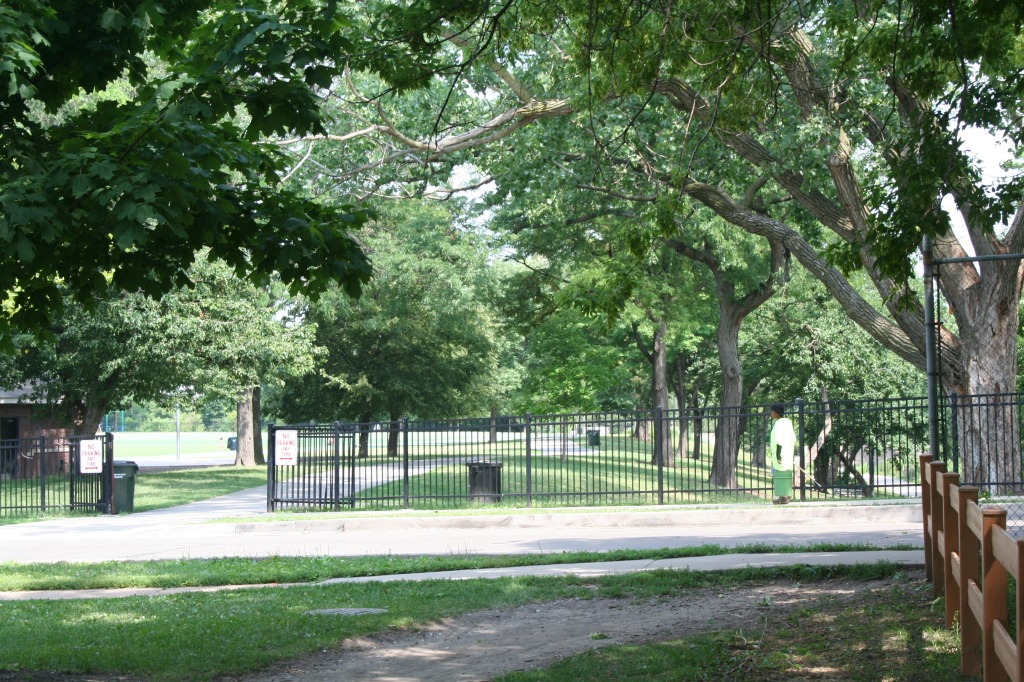
River Park
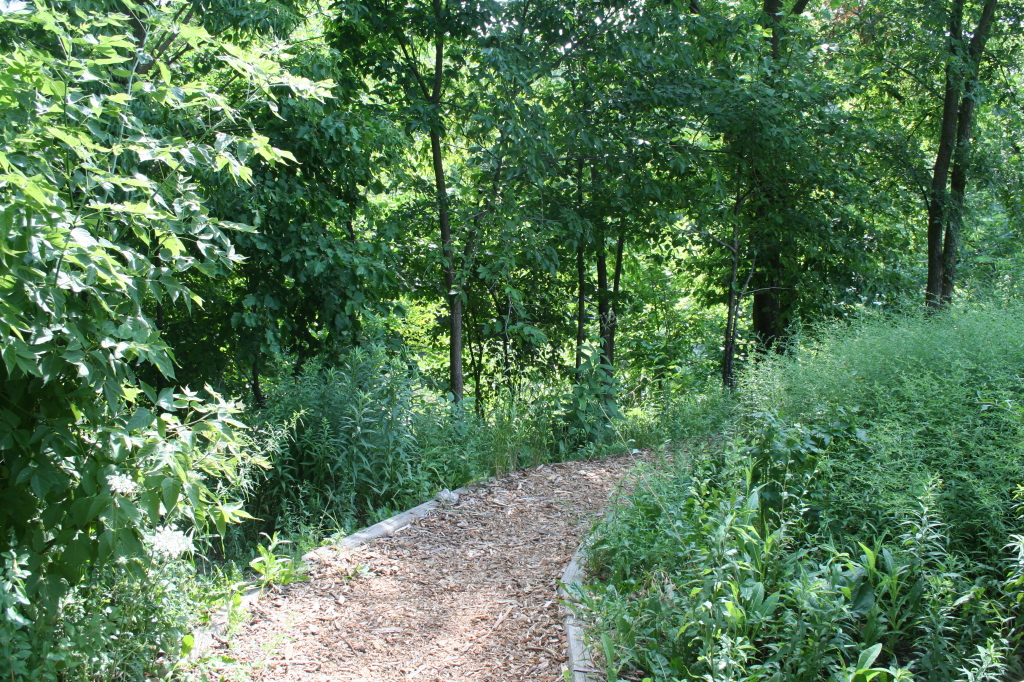
River Park
River Park is located right at this intersection of the Chicago River and canal. It is the largest of the River Park district parks at more than 30 acres. Designed by landscape architect Jacob L. Crane, Jr., the park also features a fieldhouse designed by Clarence Hatzfeld in 1929. We will ride along the rive path directly into the adjoining Ronan Park
Ronan Park (c/o River Park) – 3000 W. Argyle St.
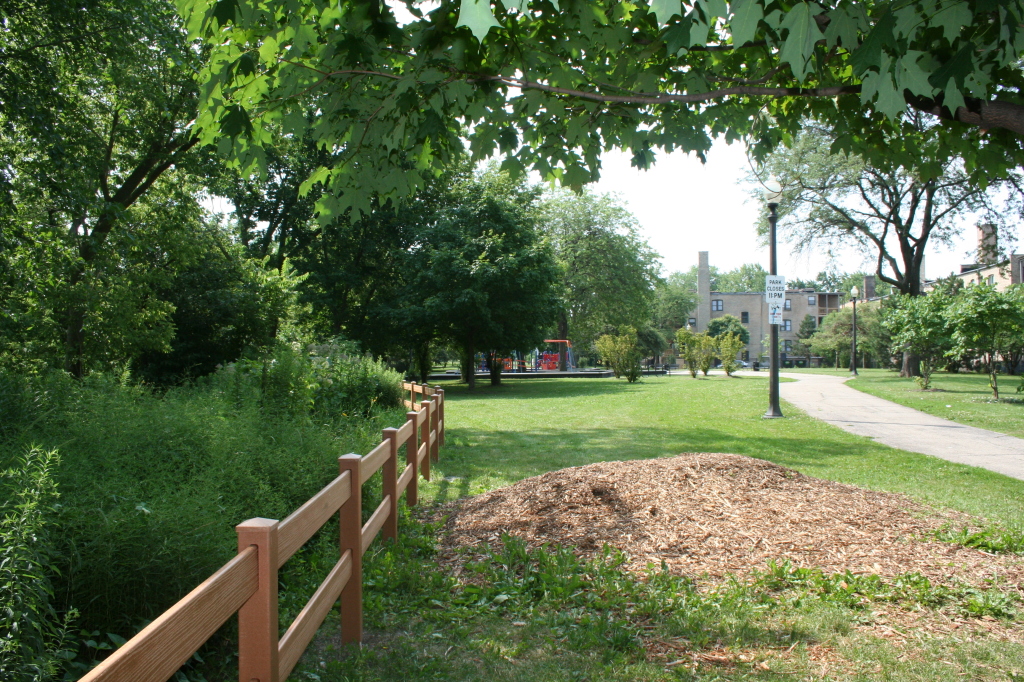
Ronan Park
Named for George Ronan, who became the first West Point graduate to fall in battle during the Fort Dearborn Massacre of 1812, this park represents an attempt to add public green space to the area surrounding the North River Branch channel and the pumping station on the other side of the river, built in 1929.
Lawrence Avenue
Lawrence Avenue is also known as Honorary Seoul Drive, due to the large number of Korean businesses located on the street, and in fact, this area surrounding Lawrence Avenue from Kedzie to Pulaski is also commonly known as Koreatown. Up and down this street are a number of classic commercial buildings dating from the early 20th century through the 1930s. We will be biking back close to Pulaski, so we will get a chance to see several of them.
Below are some noteworthy examples, with as many details as I could discover when they were available.
Brown Line Terminus – Kimball Station – 4755-57 N. Kimball Ave
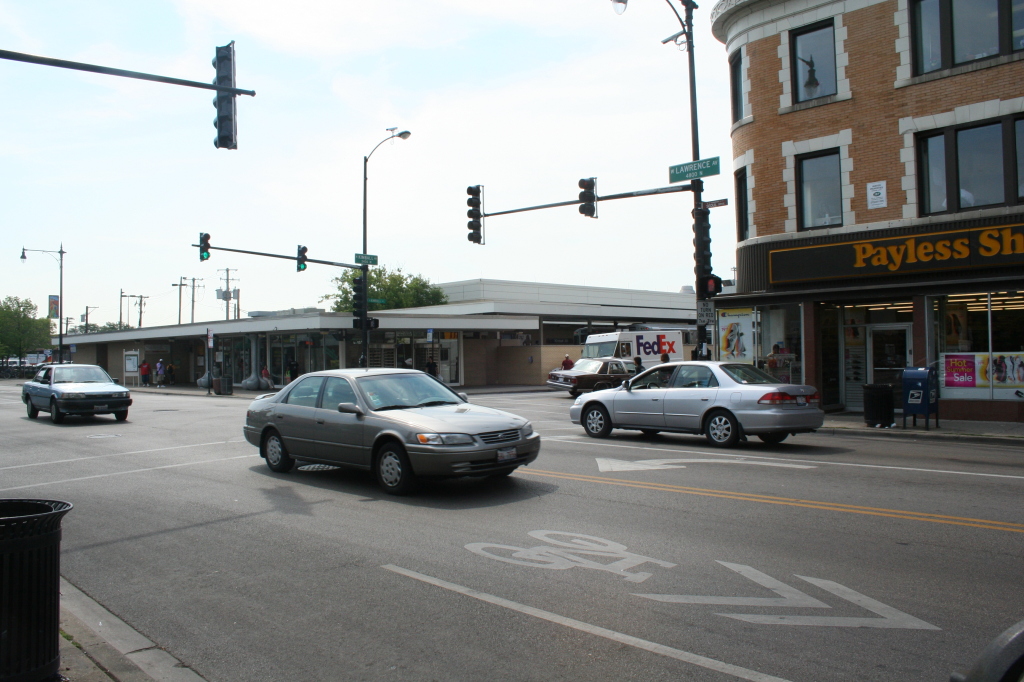
Brown Line Terminus – Kimball Station
Amongst the notable developers of Albany Park in 1893 was Charles T. Yerkes. He and one of his trusted men, DeLancy Louderback had long ago made their fortunes, but expanded it greatly when the Chicago elevated lines were privately owned. Bringing the elevated lines to Albany Park was only possible through their influence and money, but it was effective because it allowed people to settle in an area and quickly arrive in the downtown area, particularly after Louderback and Yerkes conceived of and built The Loop. Many people think of the Loop as Downtown Chicago, but it is named for the Downtown loop of elevated train stops that were built to service the entire downtown area and all three of the elevated line companies.
Building the Ravenswood Elevated line and placing its terminus here marked an explosion in building and development in commercial and residential Real Estate. Due to the location of this el, the population of Albany Park went from 7,000 in the 1910 census to over 55,000 in the 1930 census, making it one of the most explosive growth areas in the history of Chicago.
Haugan Elementary – 4540 N Hamlin Ave
Roosevelt High – 3436 W Wilson Ave
Built by famed Chicago Board of Education architect John C. Christensen, Theodore Roosevelt High School is a Gothic Revival schoolhouse built in 1926.
Christ Evangelical Lutheran Church – 3253 W Wilson Ave
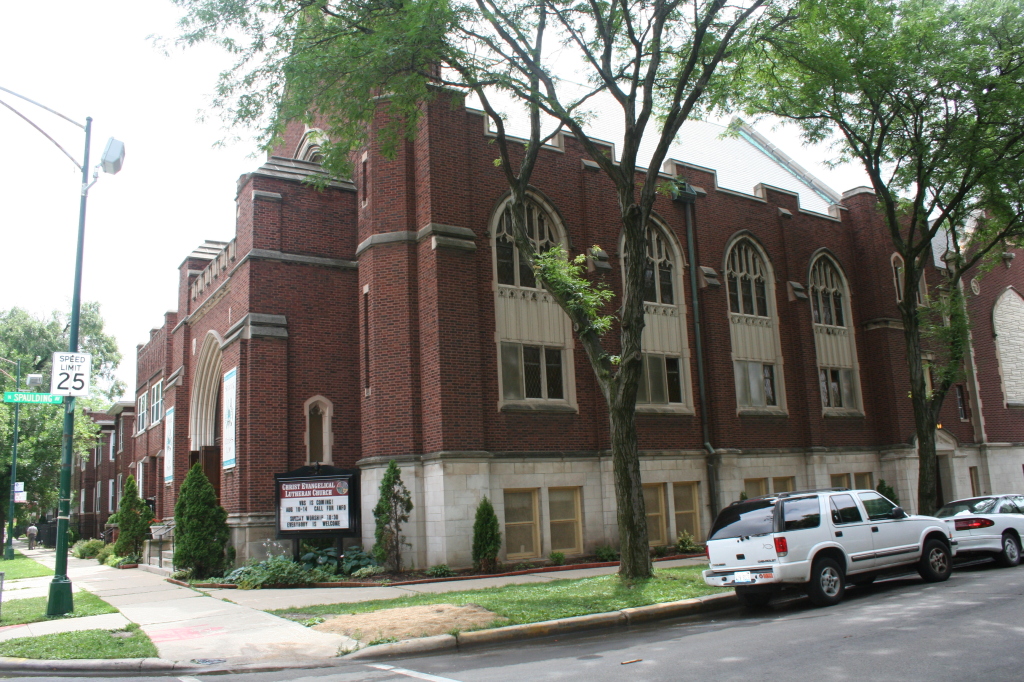
Christ Evangelical Lutheran Church
The church was organized in 1911 with the building dedicated in 1914. The parish house was built in 1922, and then a new sanctuary in 1924
Our Lady of Mercy and North River Elementary
4432 N. Troy and 4416 N. Troy
Our Lady of Mercy and North River Elementary
Ravenswood Manor
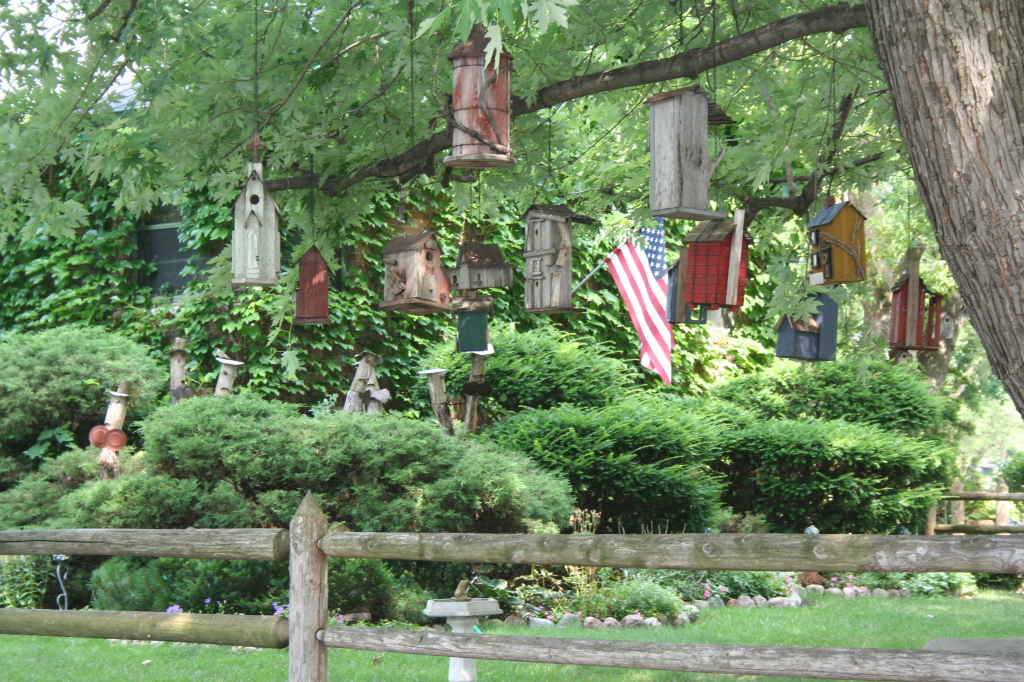
Ravenswood Manor
We are now in the neighborhood of Ravenswood Manor which goes roughly from the River to Sacramento and from Montrose to Lawrence. There are many tree-lined streets and fabulous examples of residential architecture.
4432 N Richmond
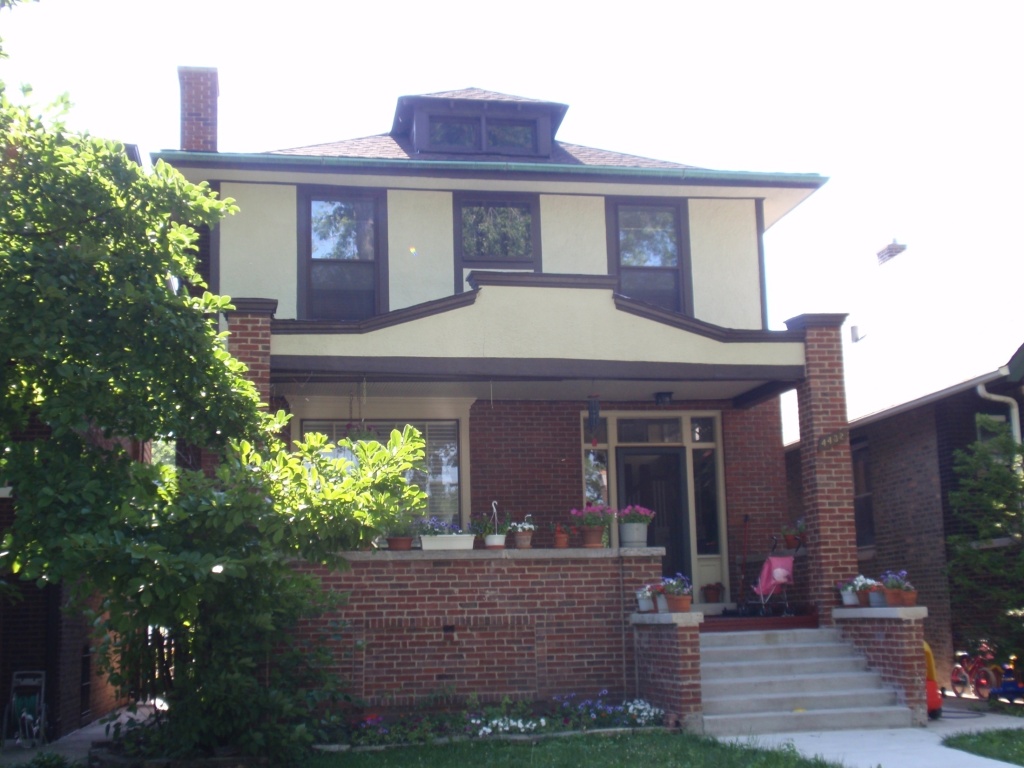
4432 N Richmond
4444 N Richmond St
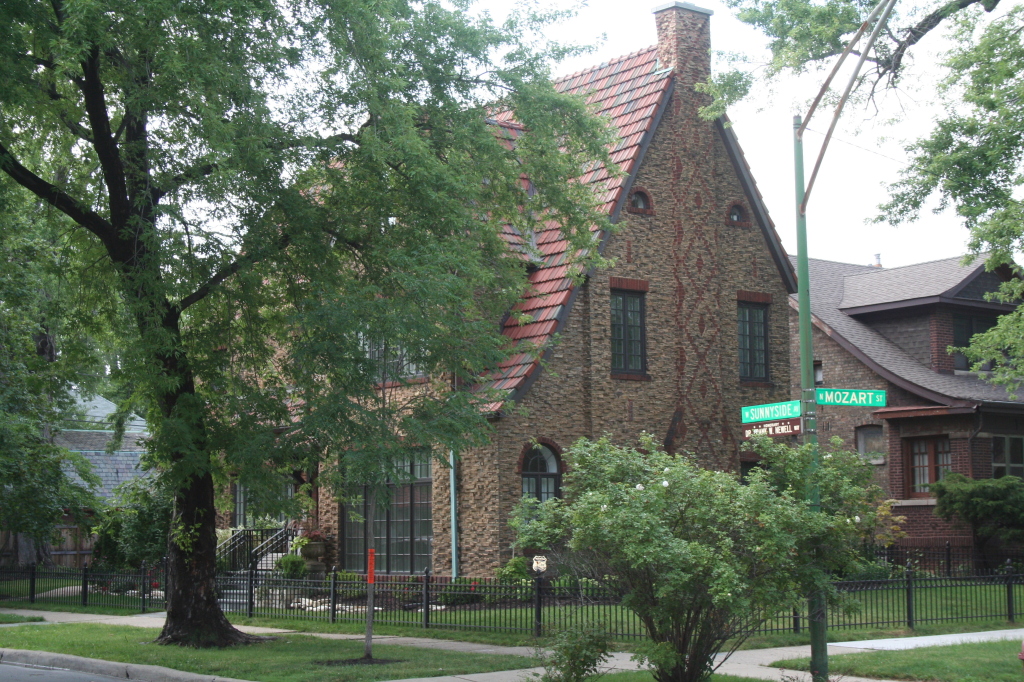
4444 N Richmond
Built in 1909 by William Schulze, this Queen Anne has certainly seen better days, but it is a magnificent structure.
4500 N Mozart
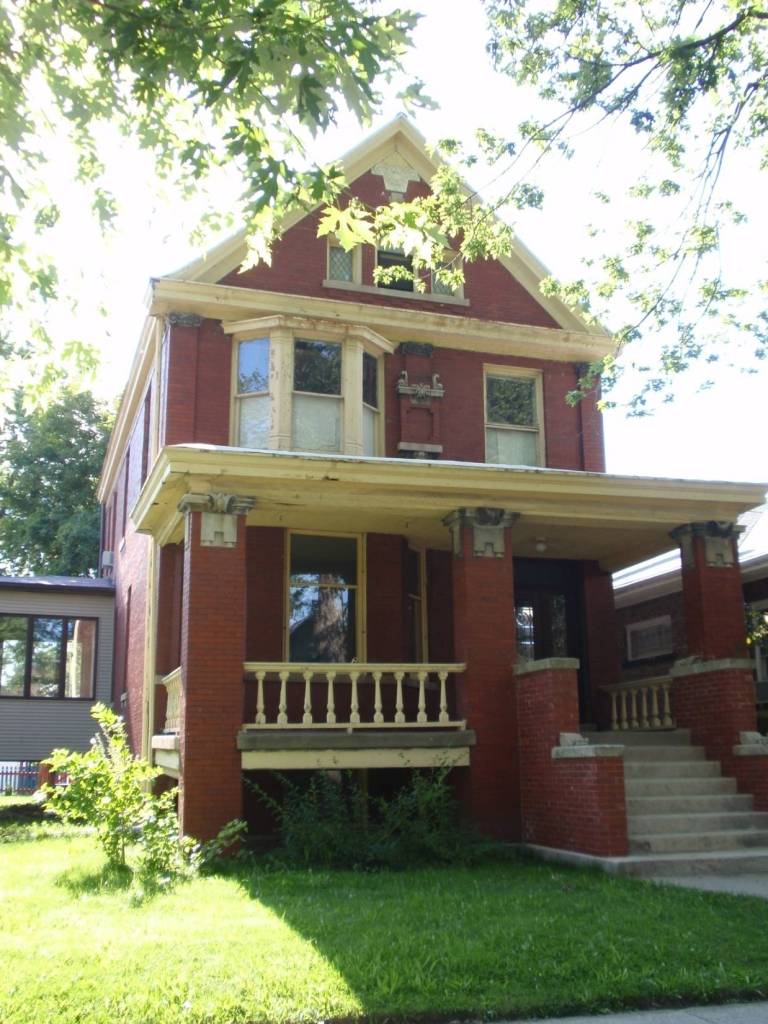
4500 N Mozart
This extremely attractive Tudor Revival building was built in 1927 by Teich and Sullivan.
2839 W Wilson Ave
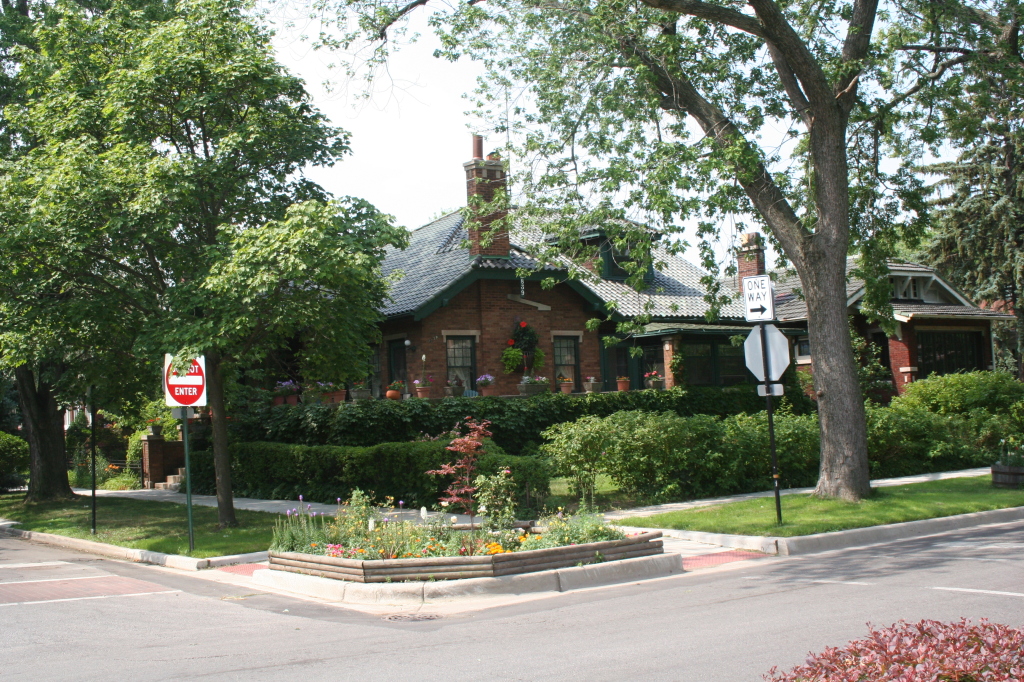
2839 W Wilson
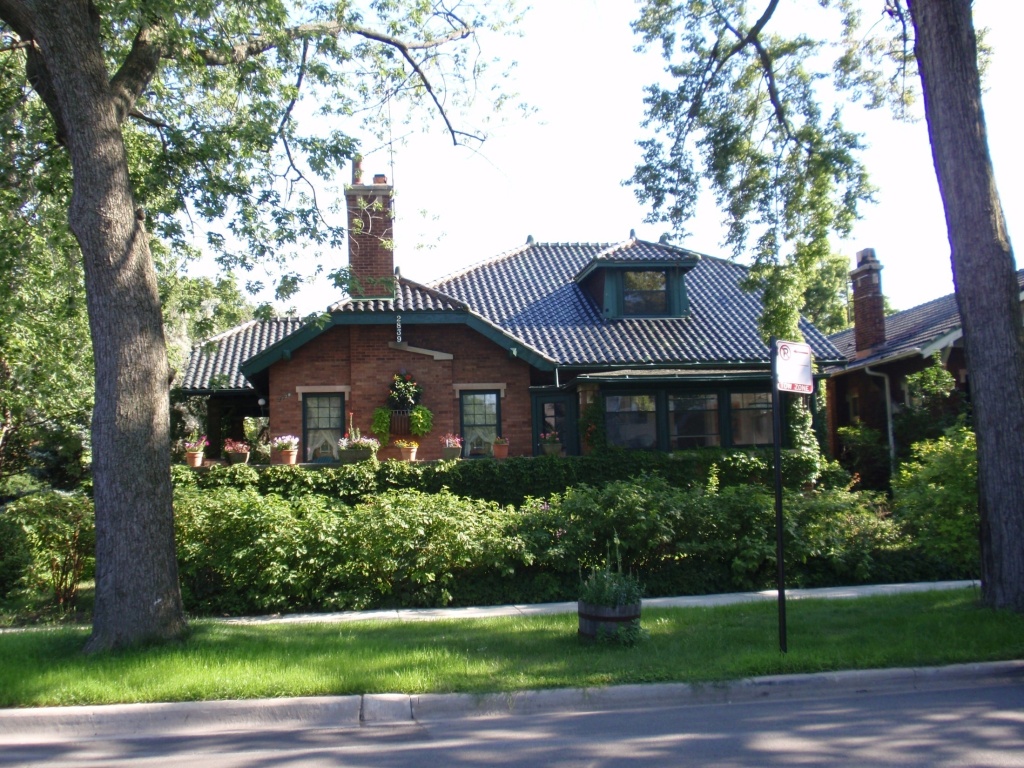
2839 W Wilson
Lovely Prairie style single family home with Craftsman and even Japanese features
2835 W Eastwood
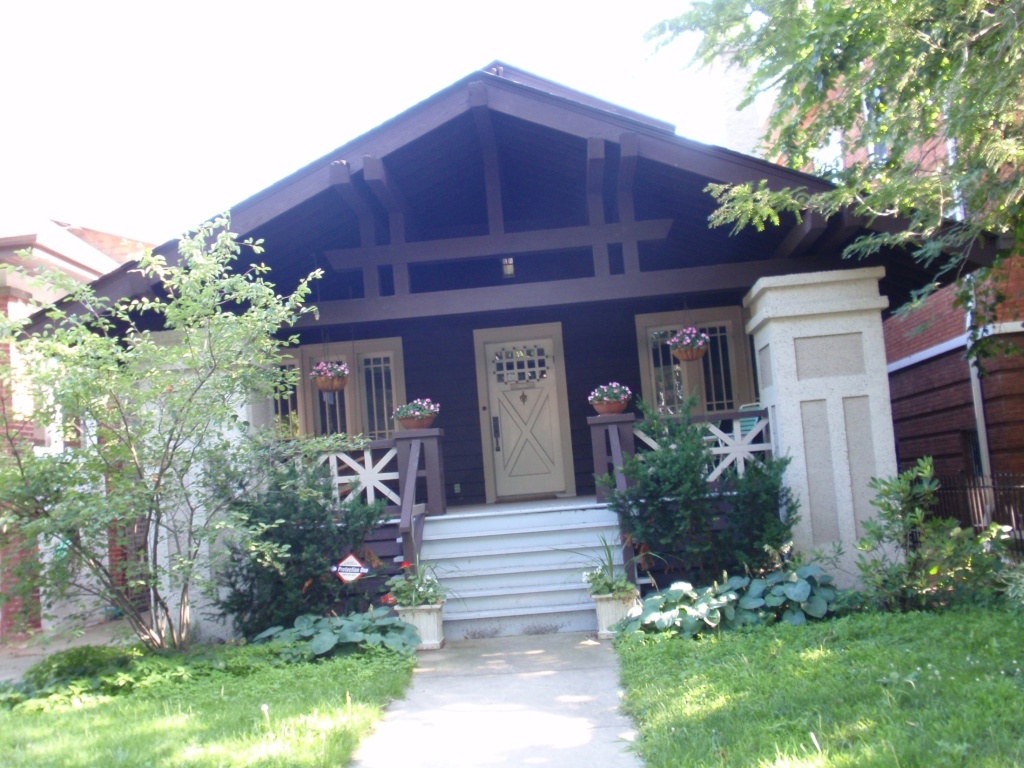
2835 W Eastwood
A brilliant little craftsman house designed by George W. Klewer in 1914.
2760 W Windsor
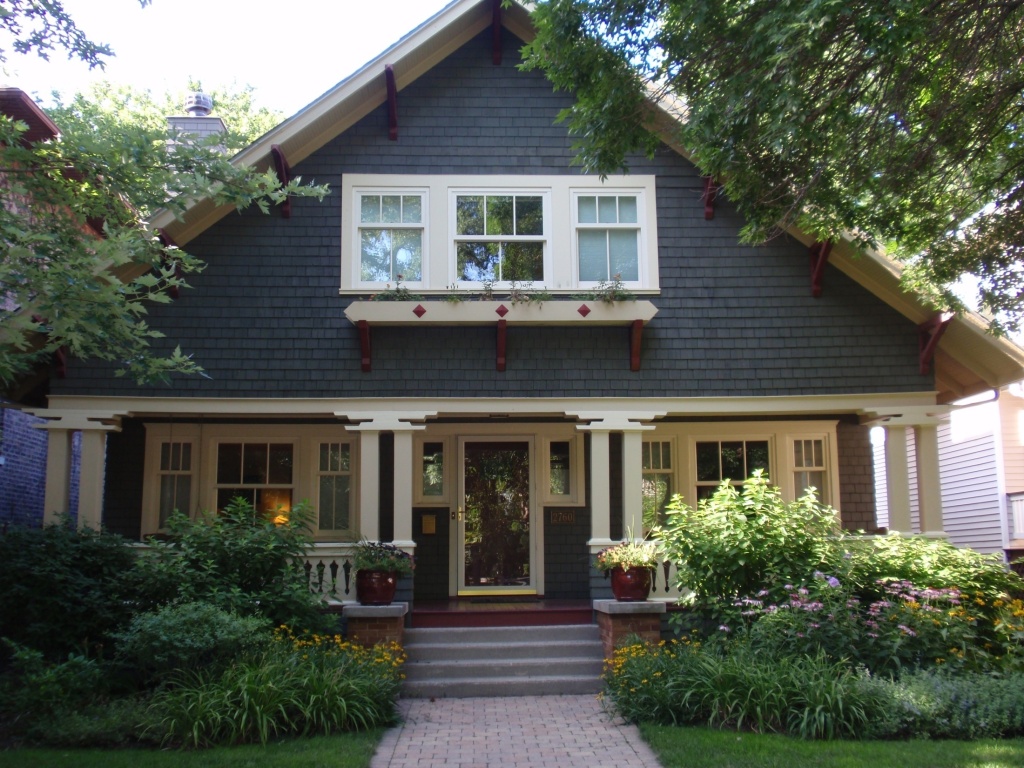
2760 W Windsor
This Craftsman single family residence was designed by Horatio R. Wilson in 1913. A very well known and respected Chicago architect, Wilson practiced in many styles. Years later in the 50s, Wilson helped design the Chess Records building.
2736 W Windsor
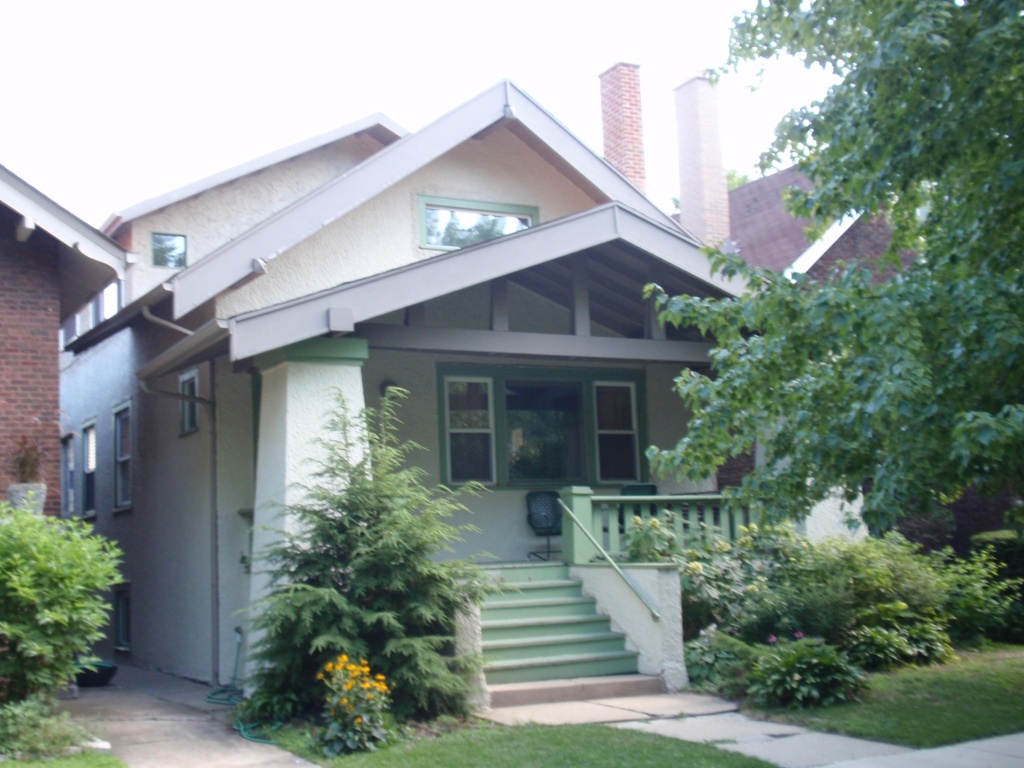
2736 W Windsor
Architect Ernest N Braucher is responsible for this 1913 Craftsman home. Braucher was a major architect of Chicago bungalows.
2730 W Windsor
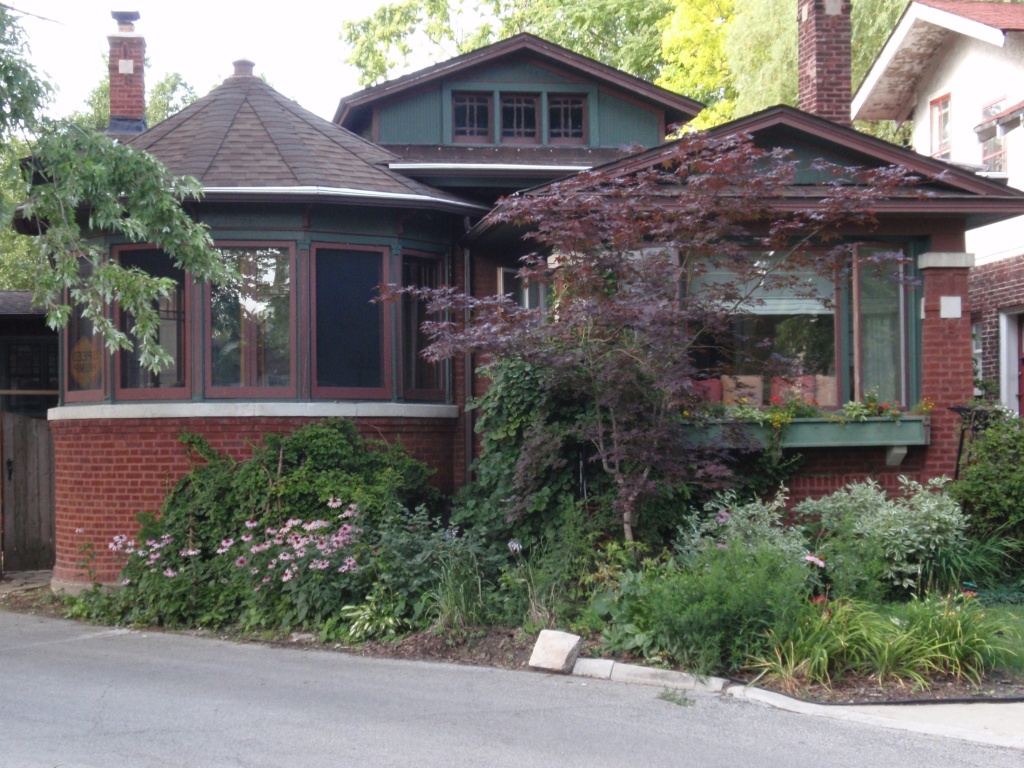
2730 W Windsor
George G. Purssell designed this Craftsman home in 1917.
2710 W Sunnyside
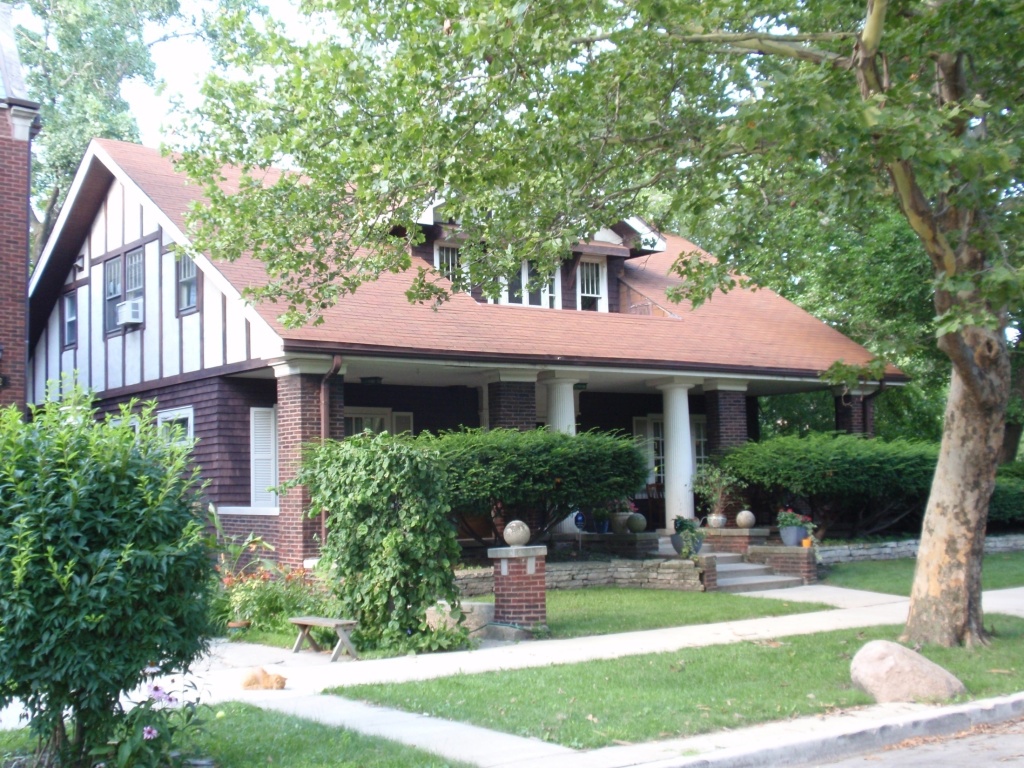
2710 W Sunnyside
Another impressive Craftsman house.
Blago’s Home – 2934 W Sunnyside
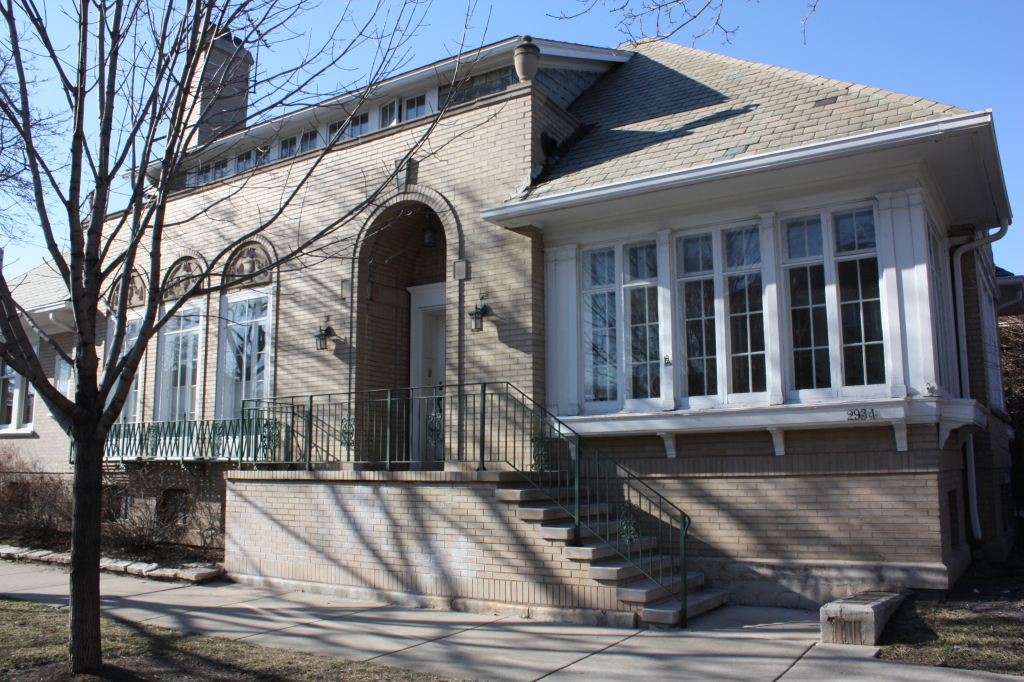
2934 W Sunnyside
Illinois most-recently jailed ex-Governor Rod Blagojevich lived in this Classical/Mission house before heading off to prison. One can see the remnants of some rather uncomplimentary graffiti on the front stairs.
Horner Park – 2741 W Montrose
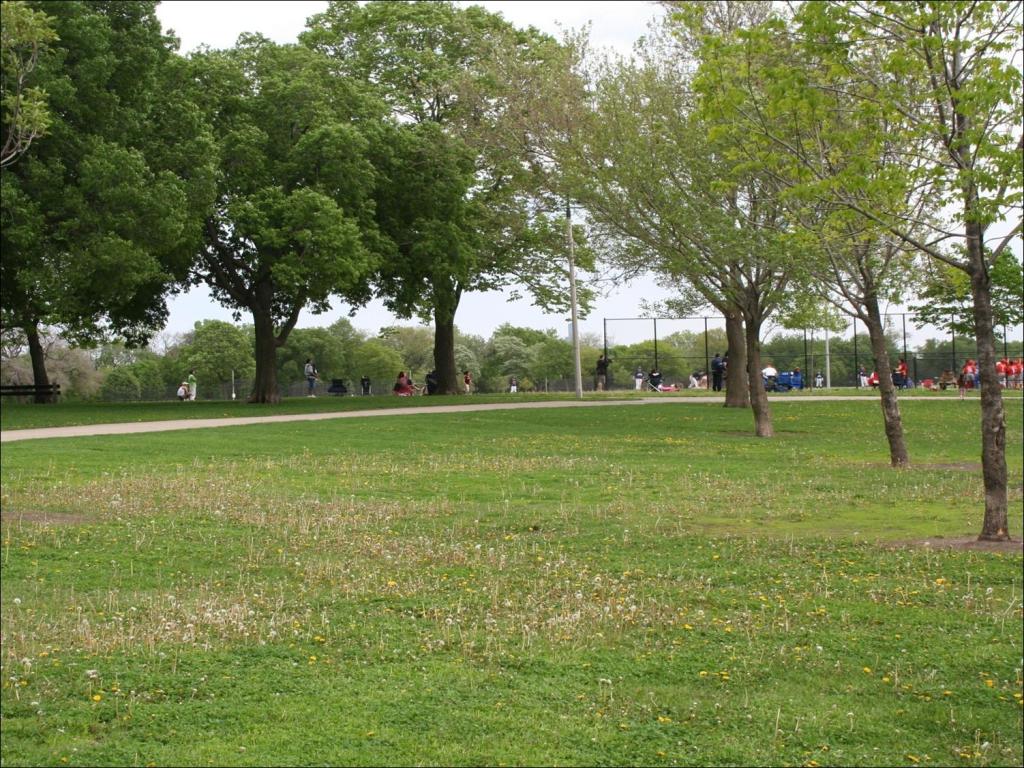
Horner Park
Officially outside of the Ravenswood area since it ends at Montrose, it is still a nicer place to end a tour than in the middle of the street, so we will once again borrow an area from our Irving Park Tour. Horner Park is over 50 acres, making it one of the largest parks on the North side of Chicago. There are a wide variety of sports leagues that use the facilities, as well as playgrounds, recreation activities and courses. This park is named in honor of Henry Horner, the first Jewish governor of Illinois.

